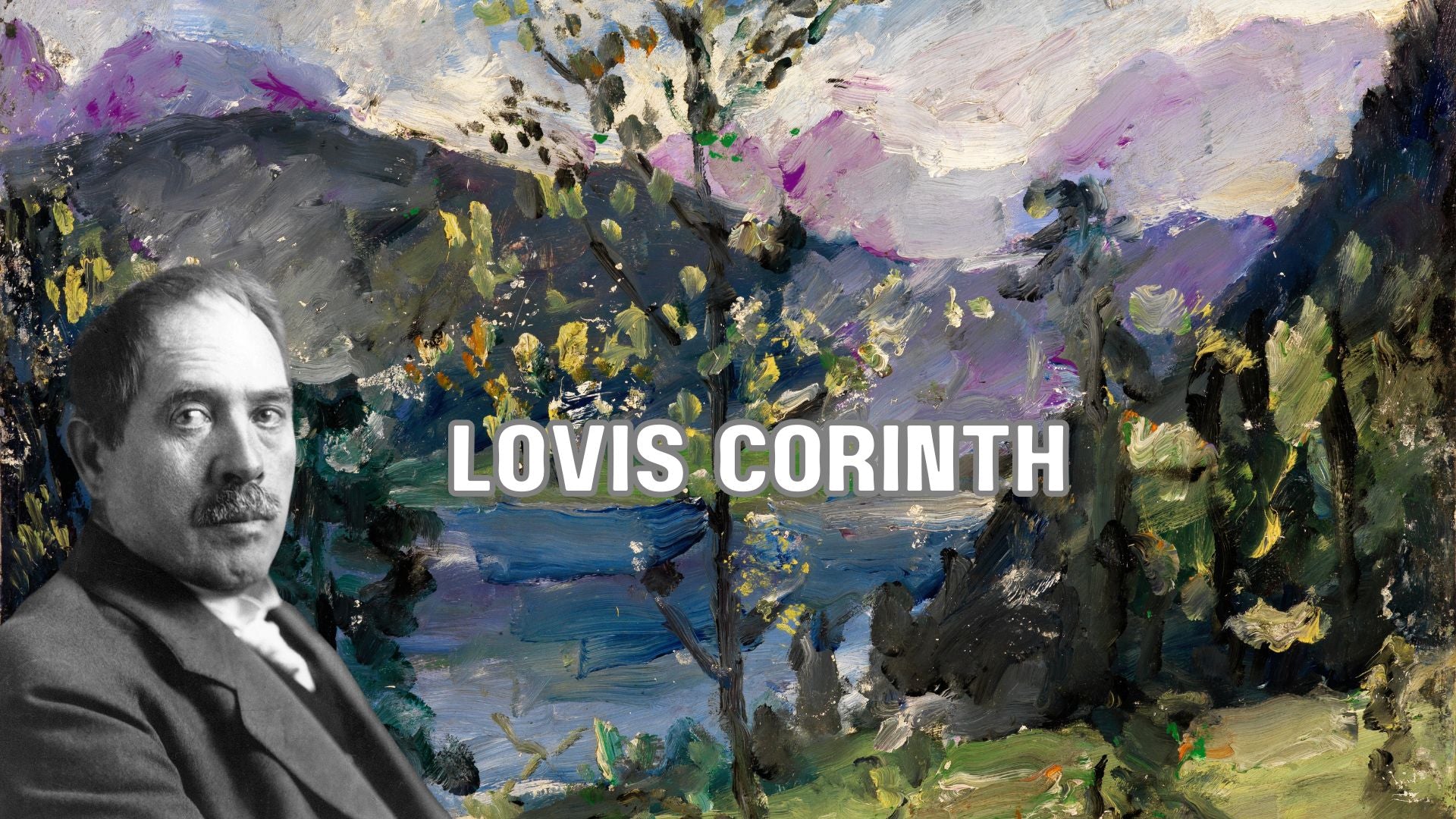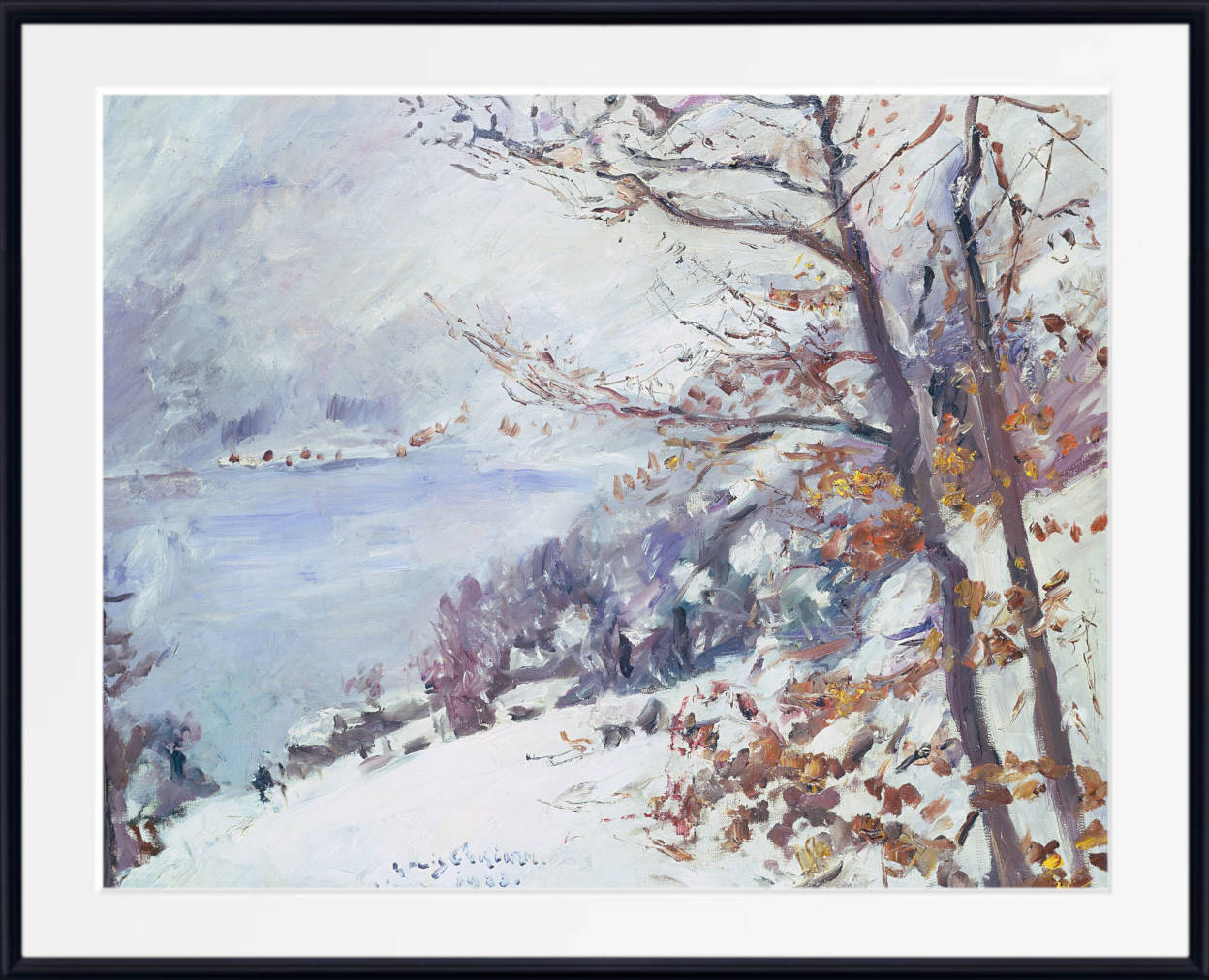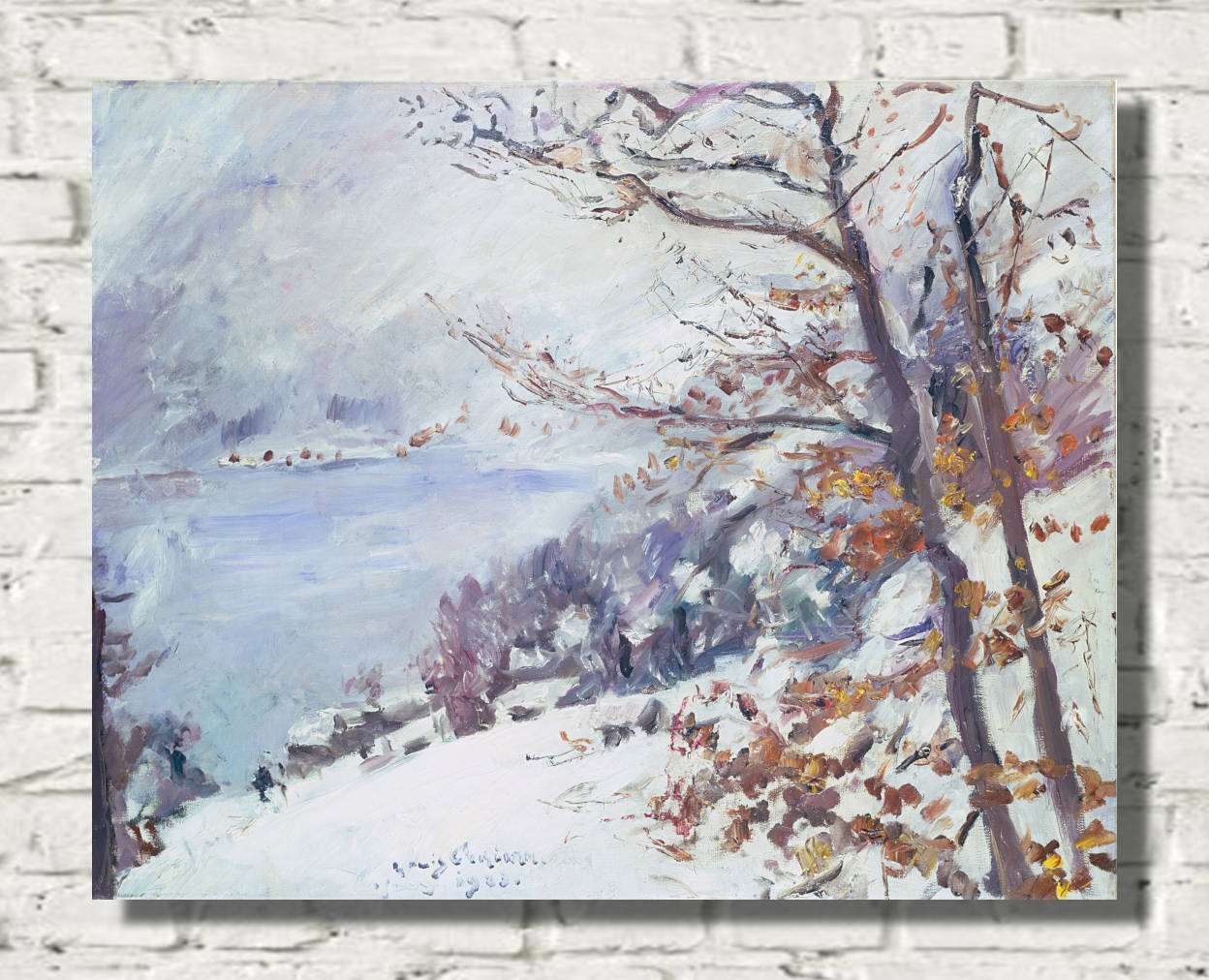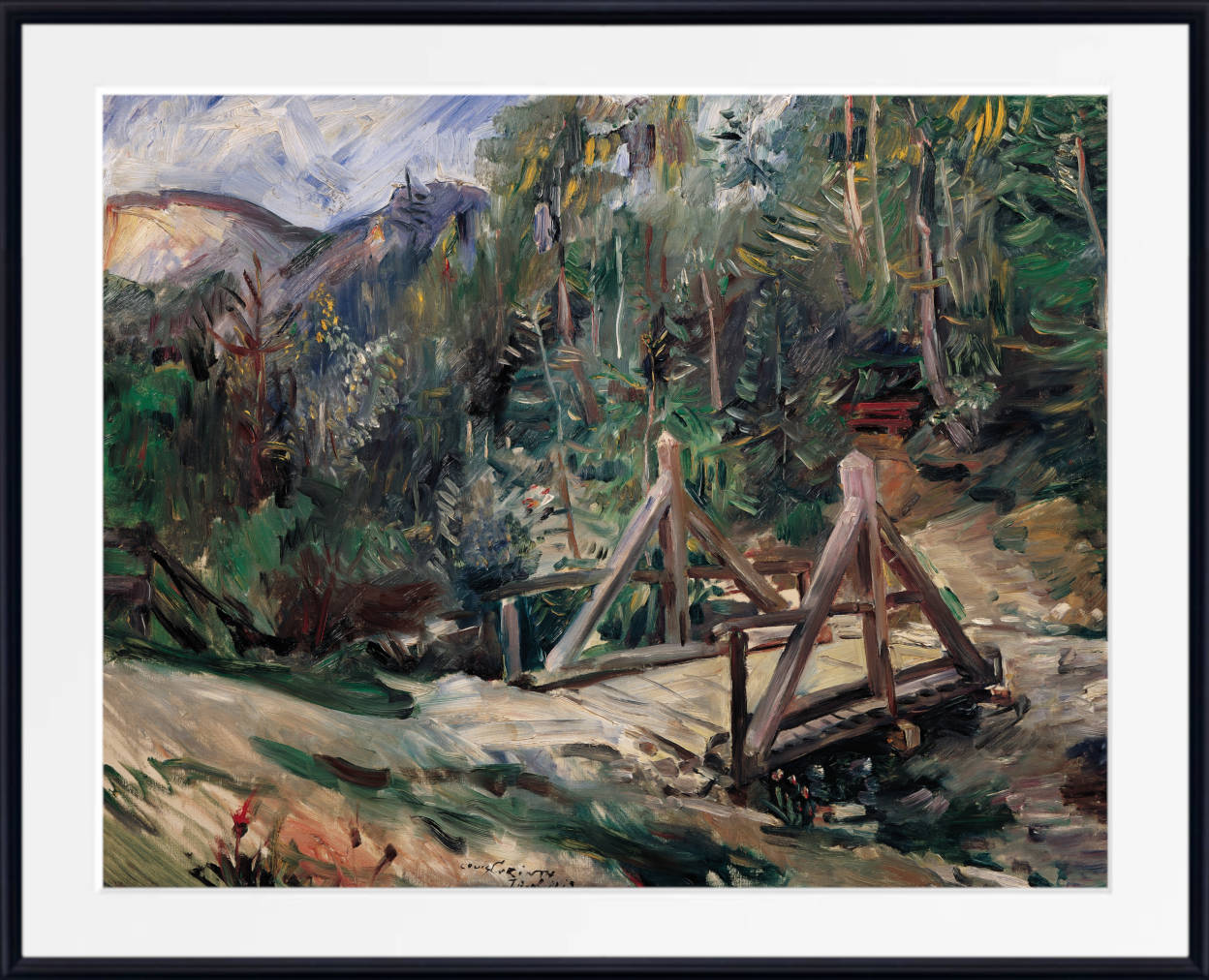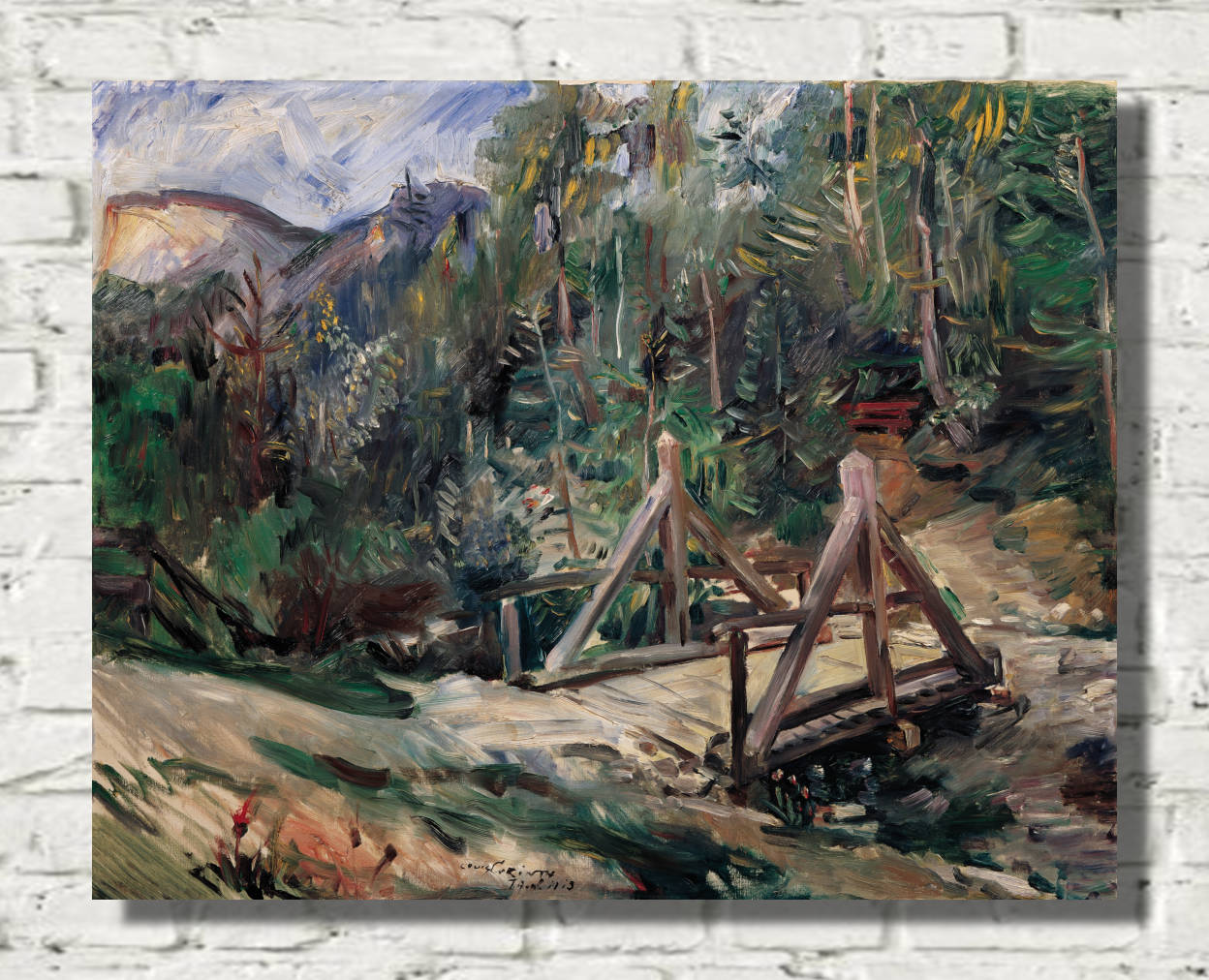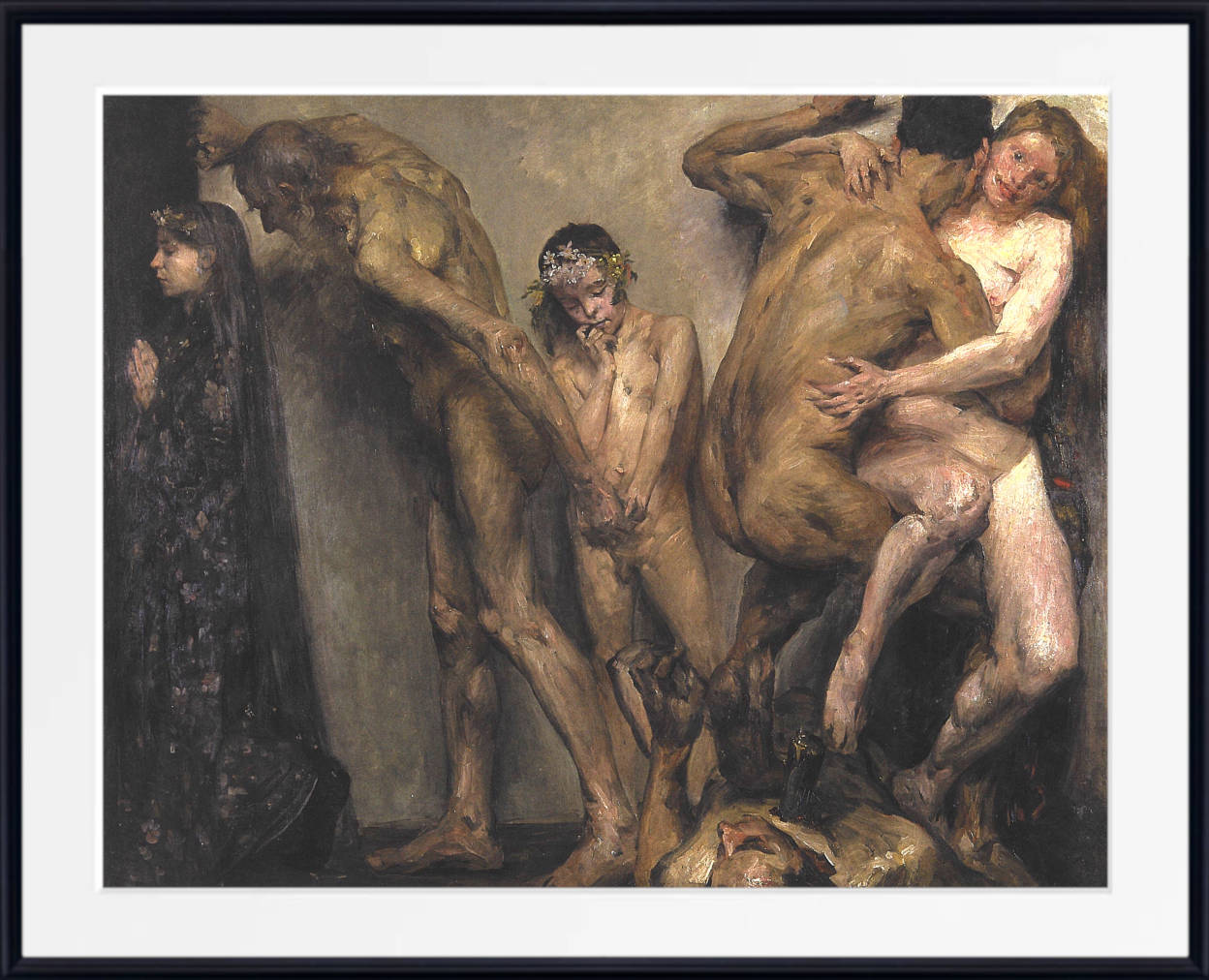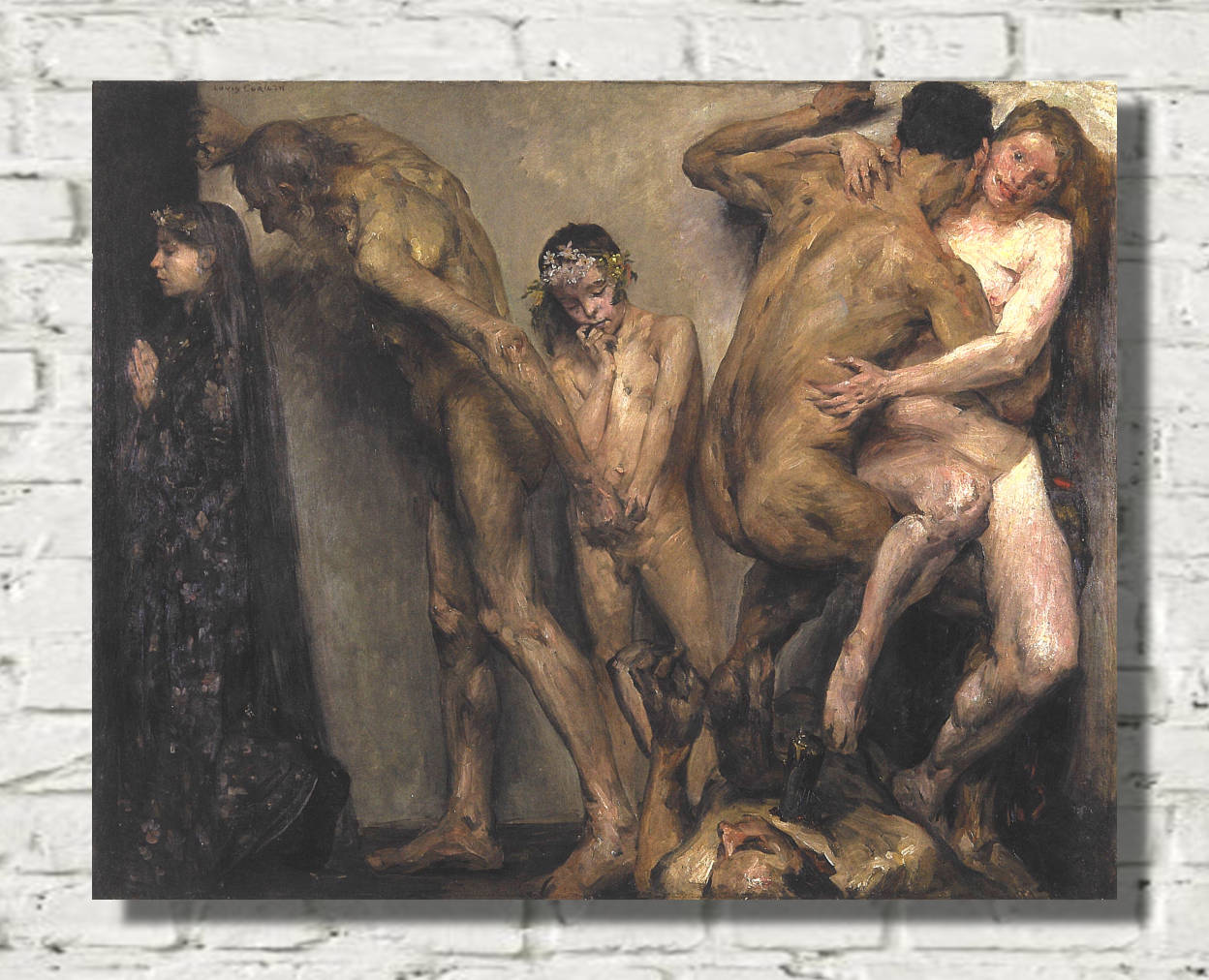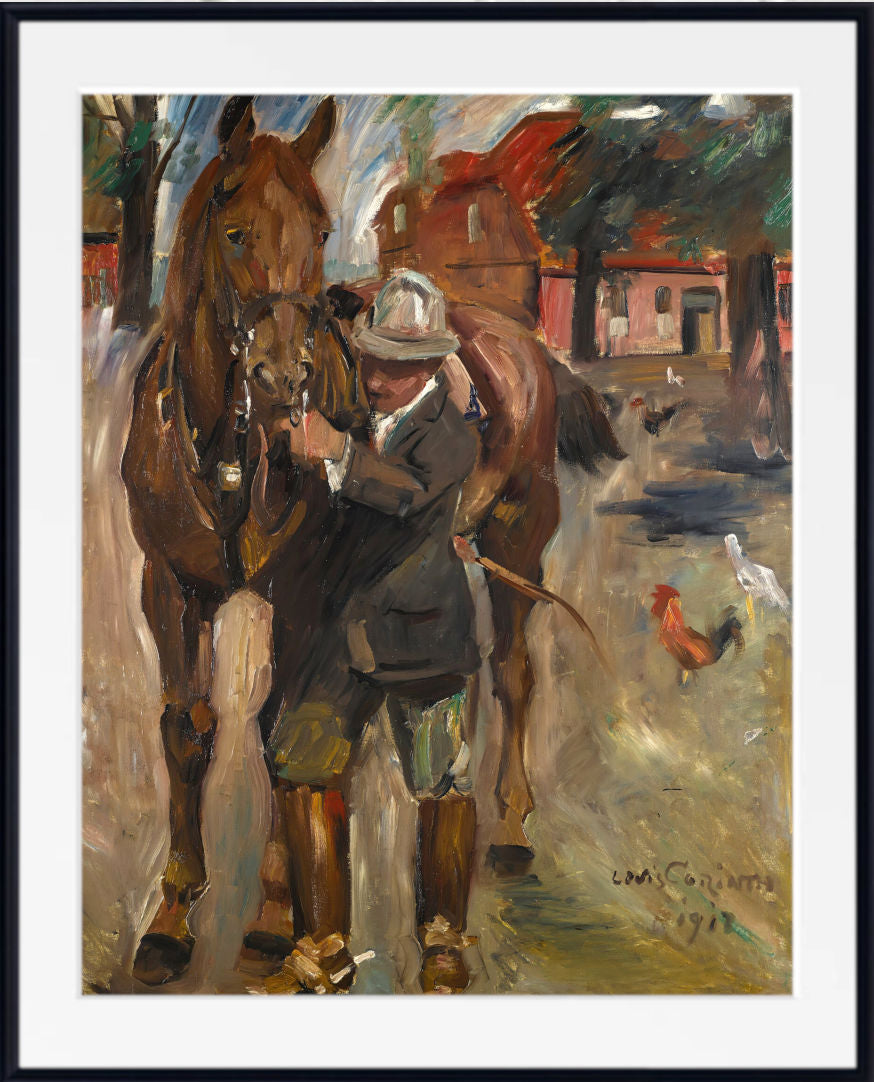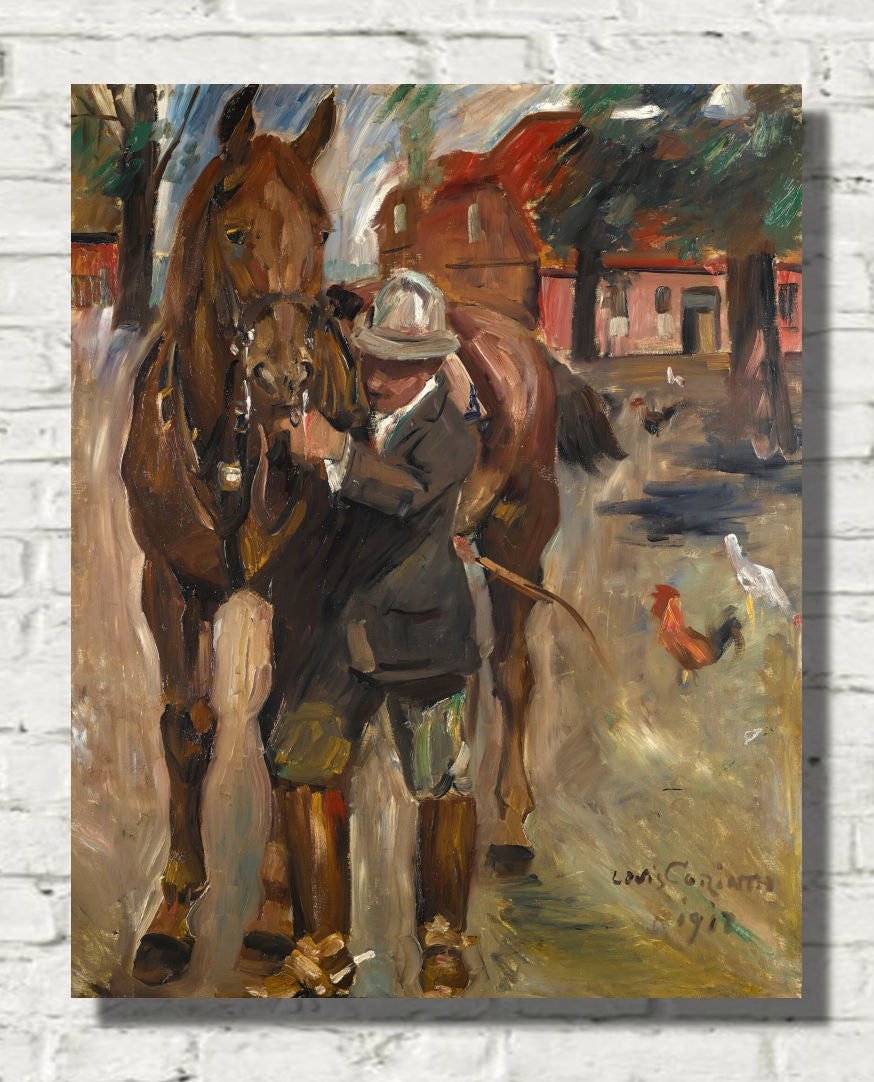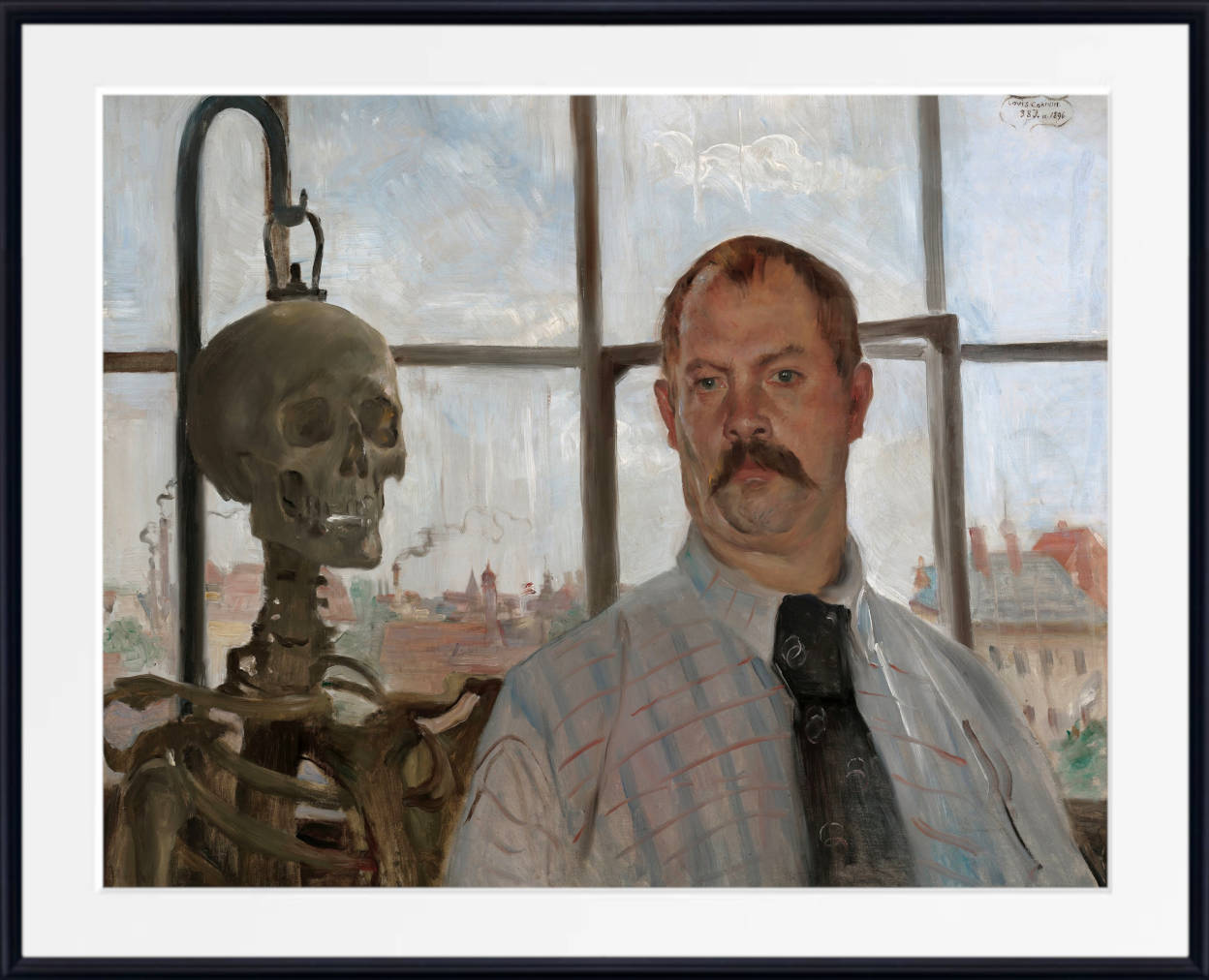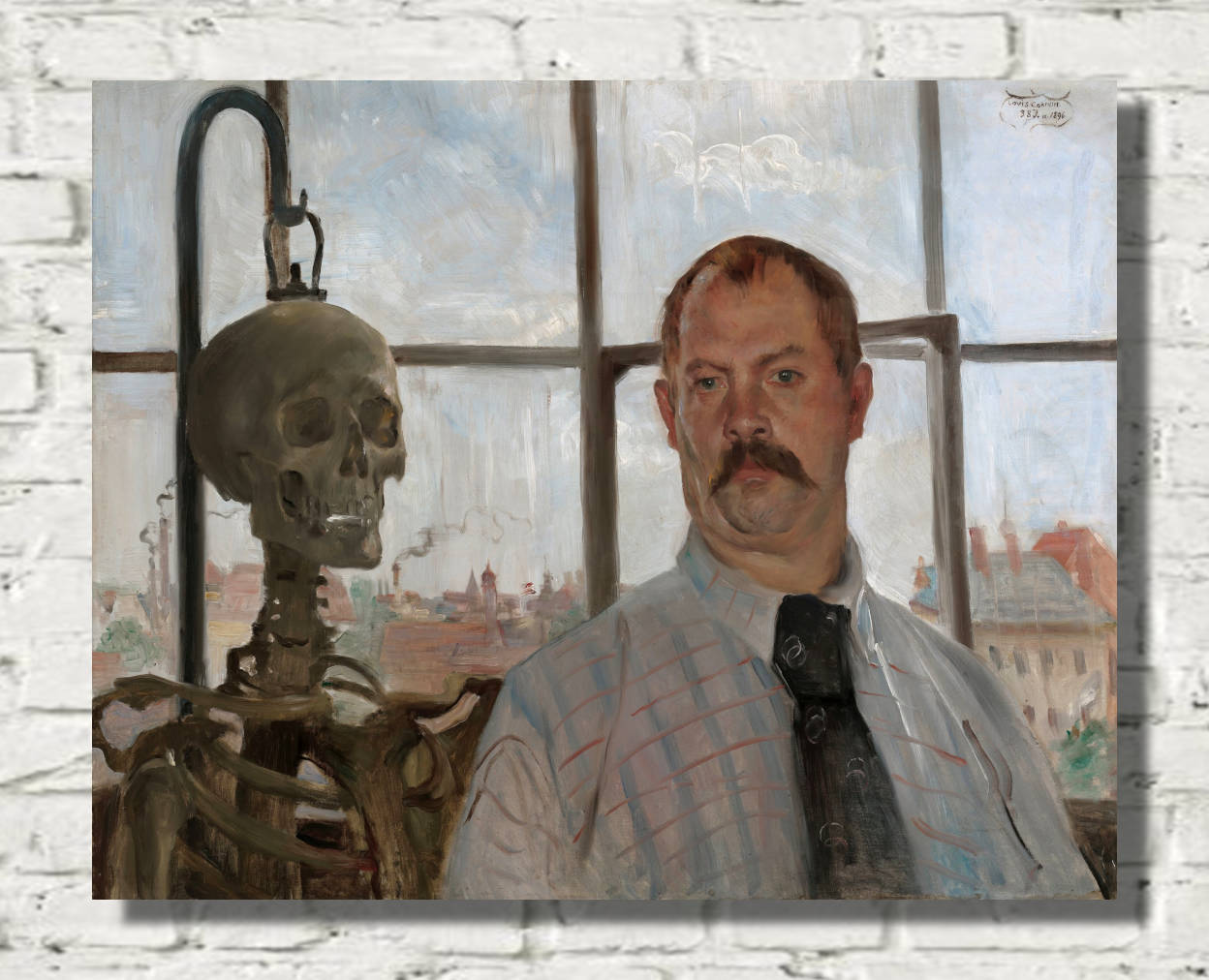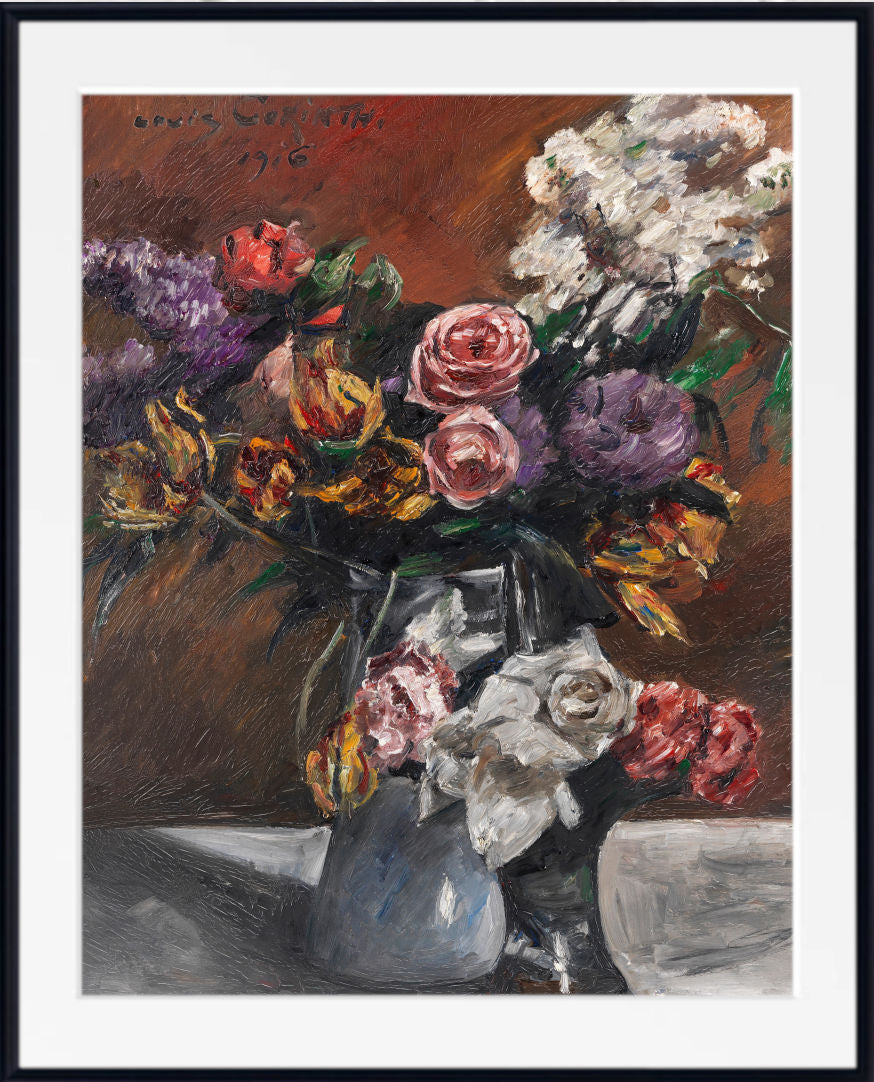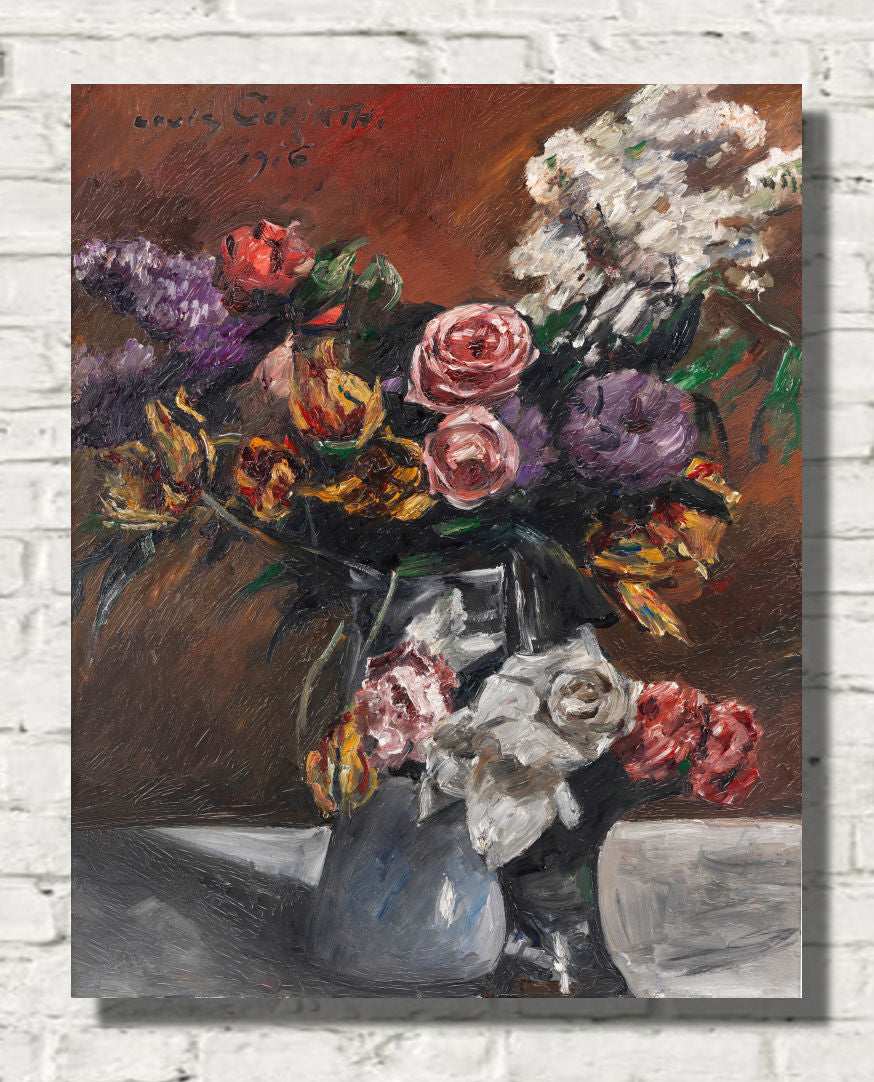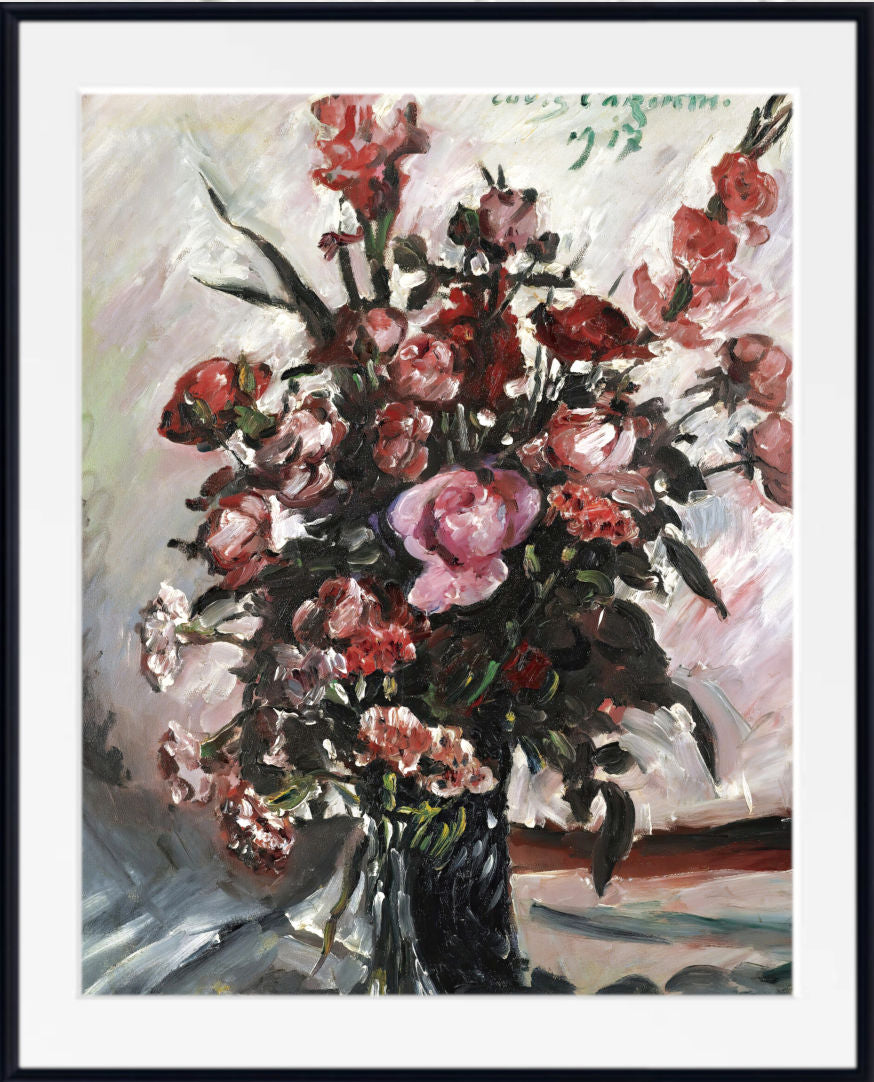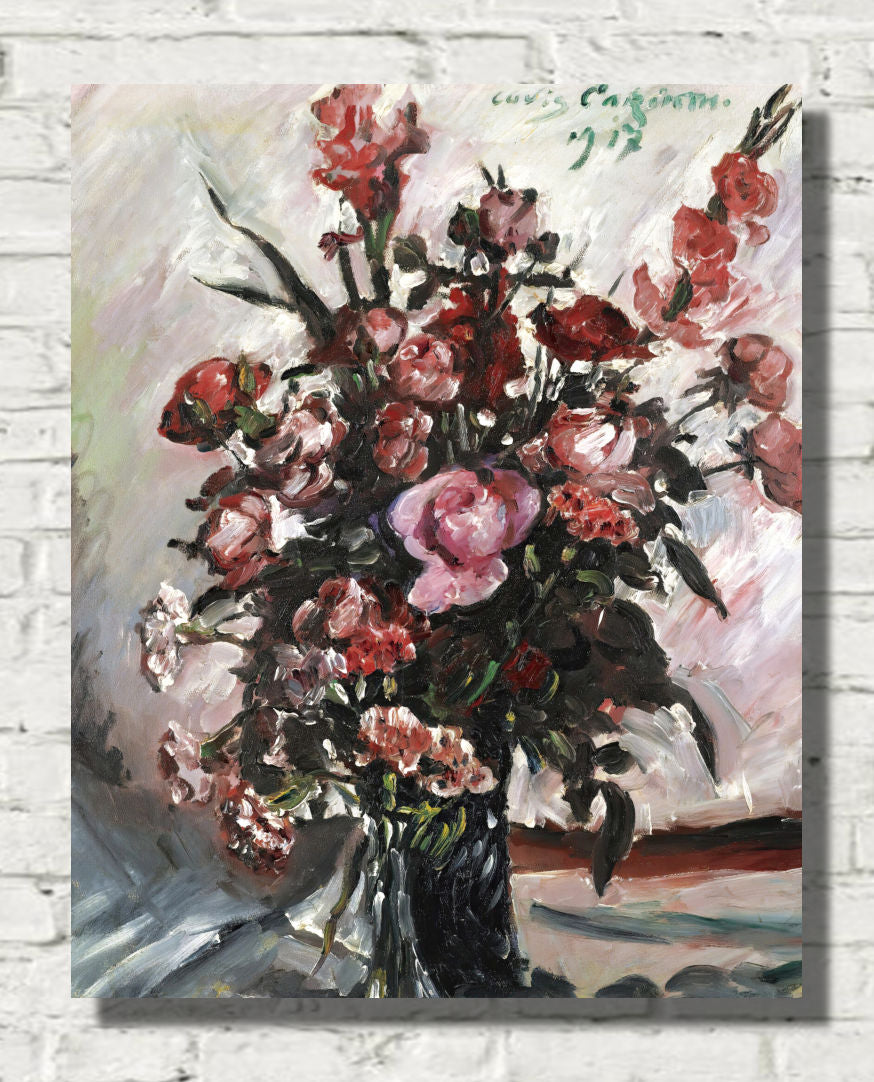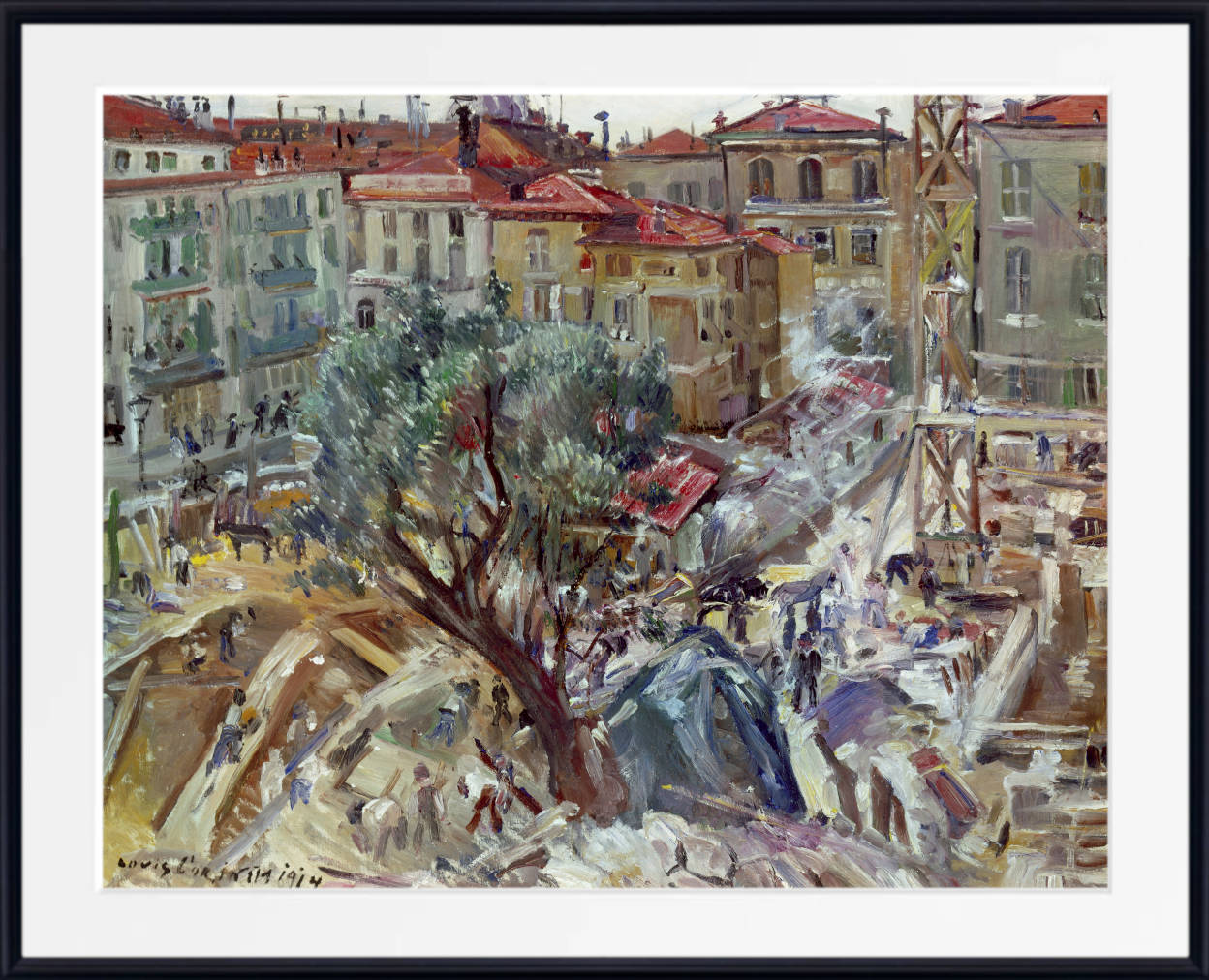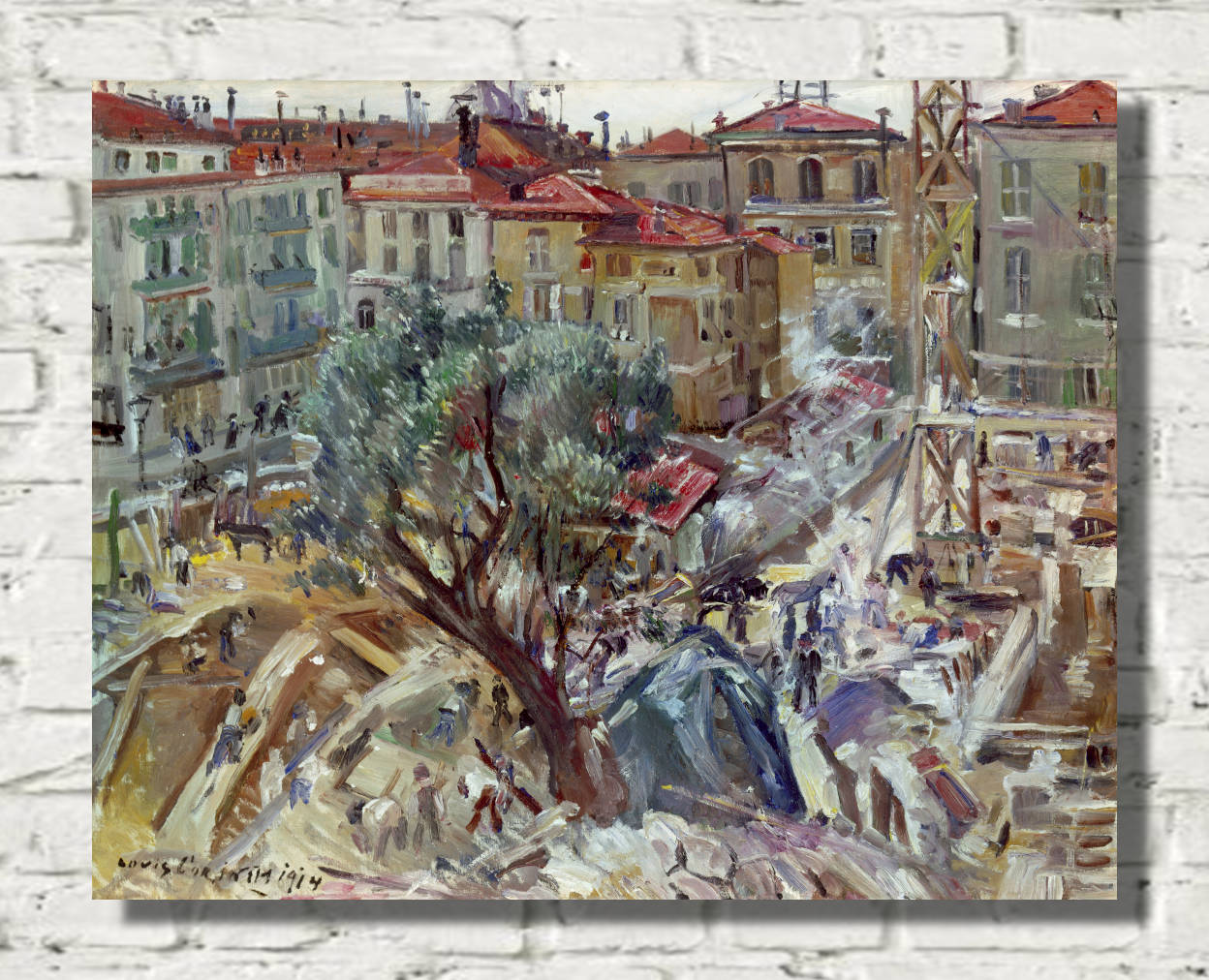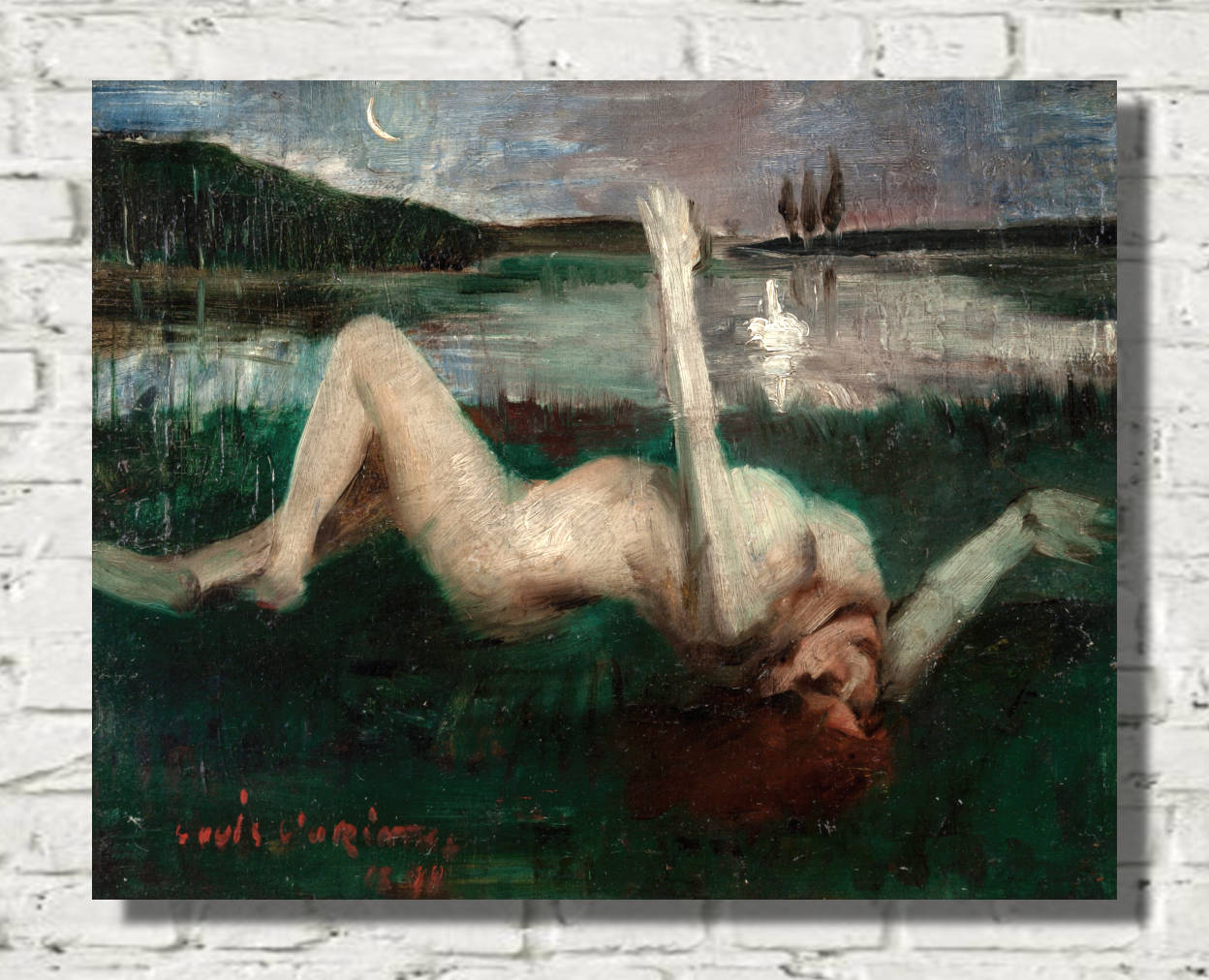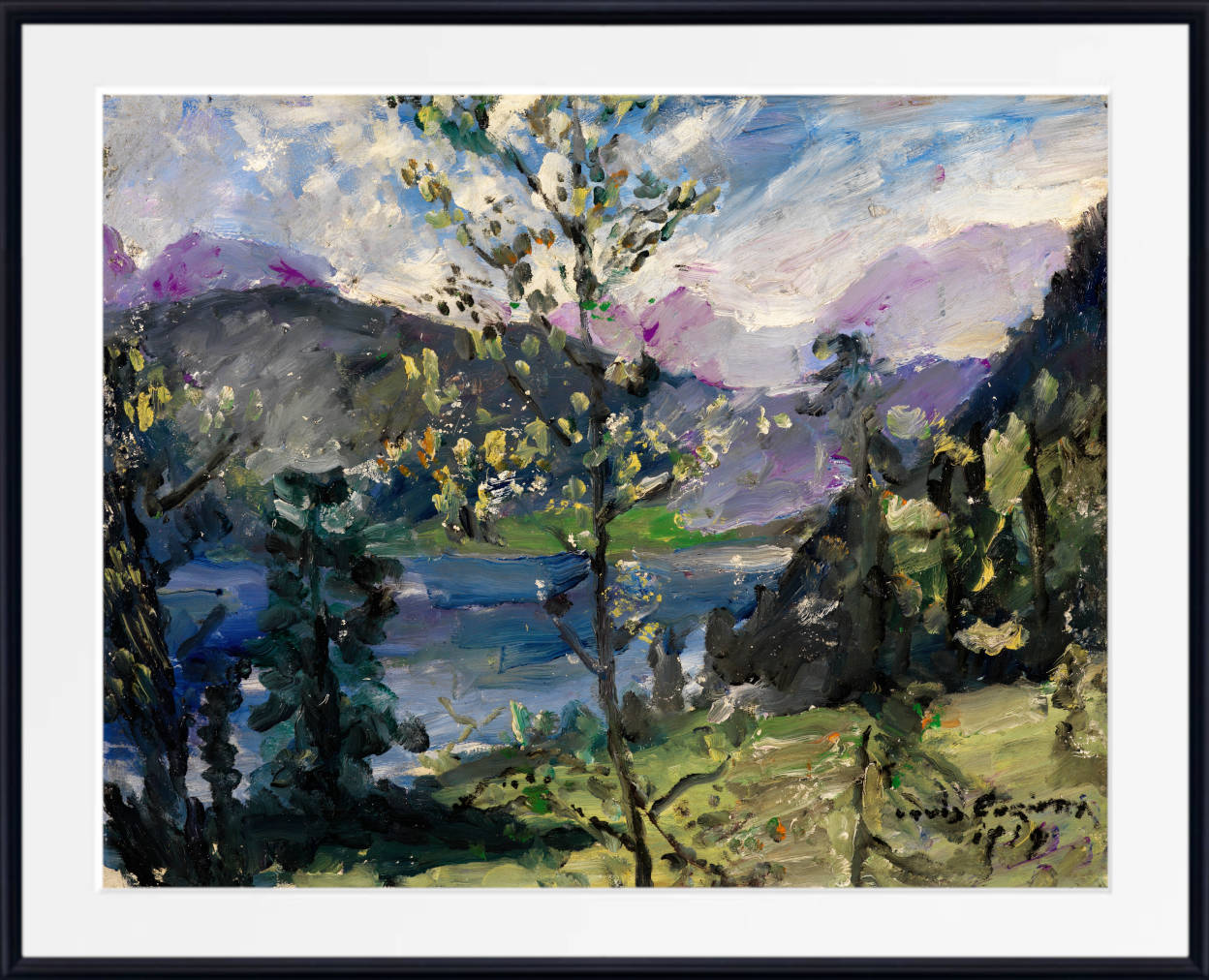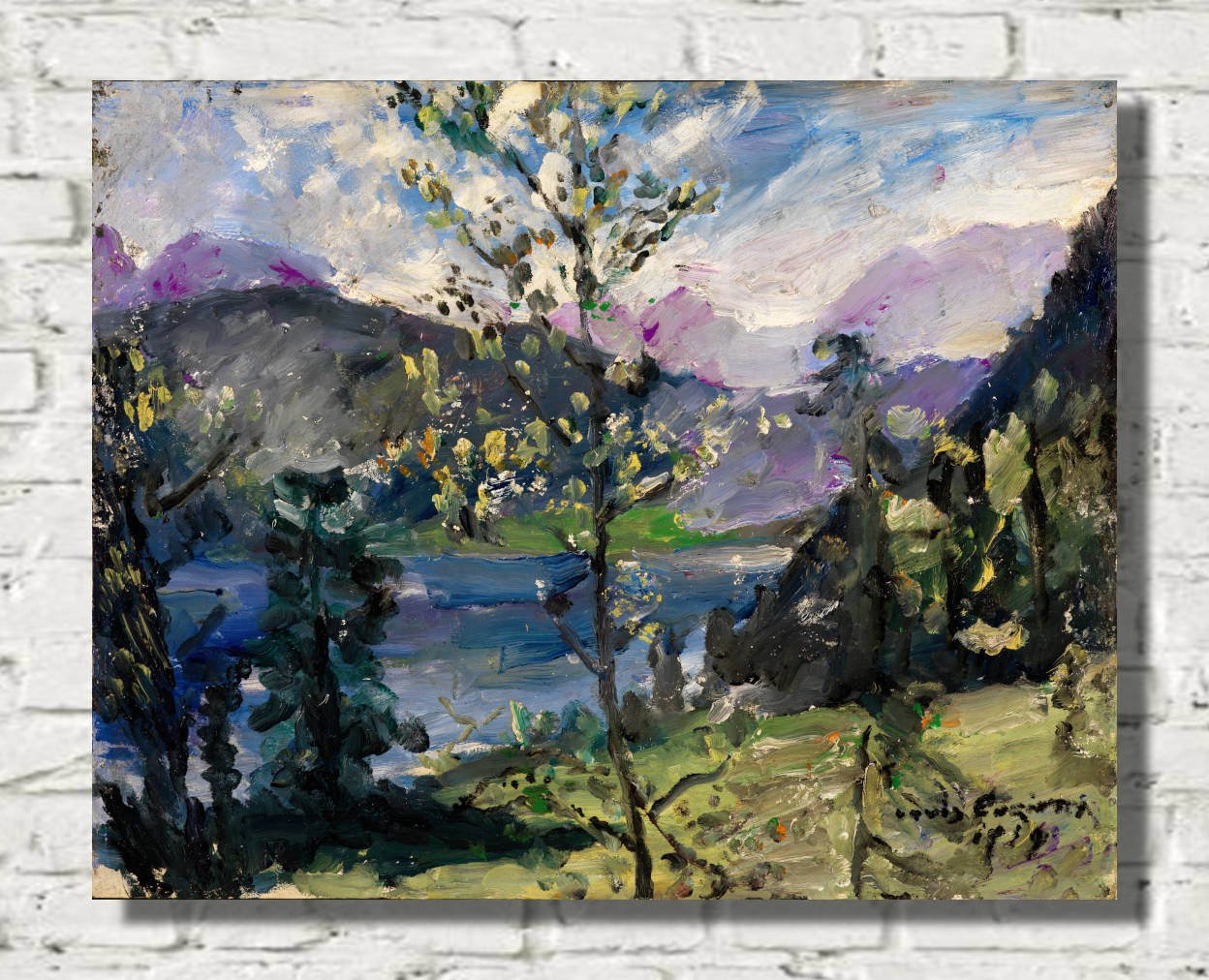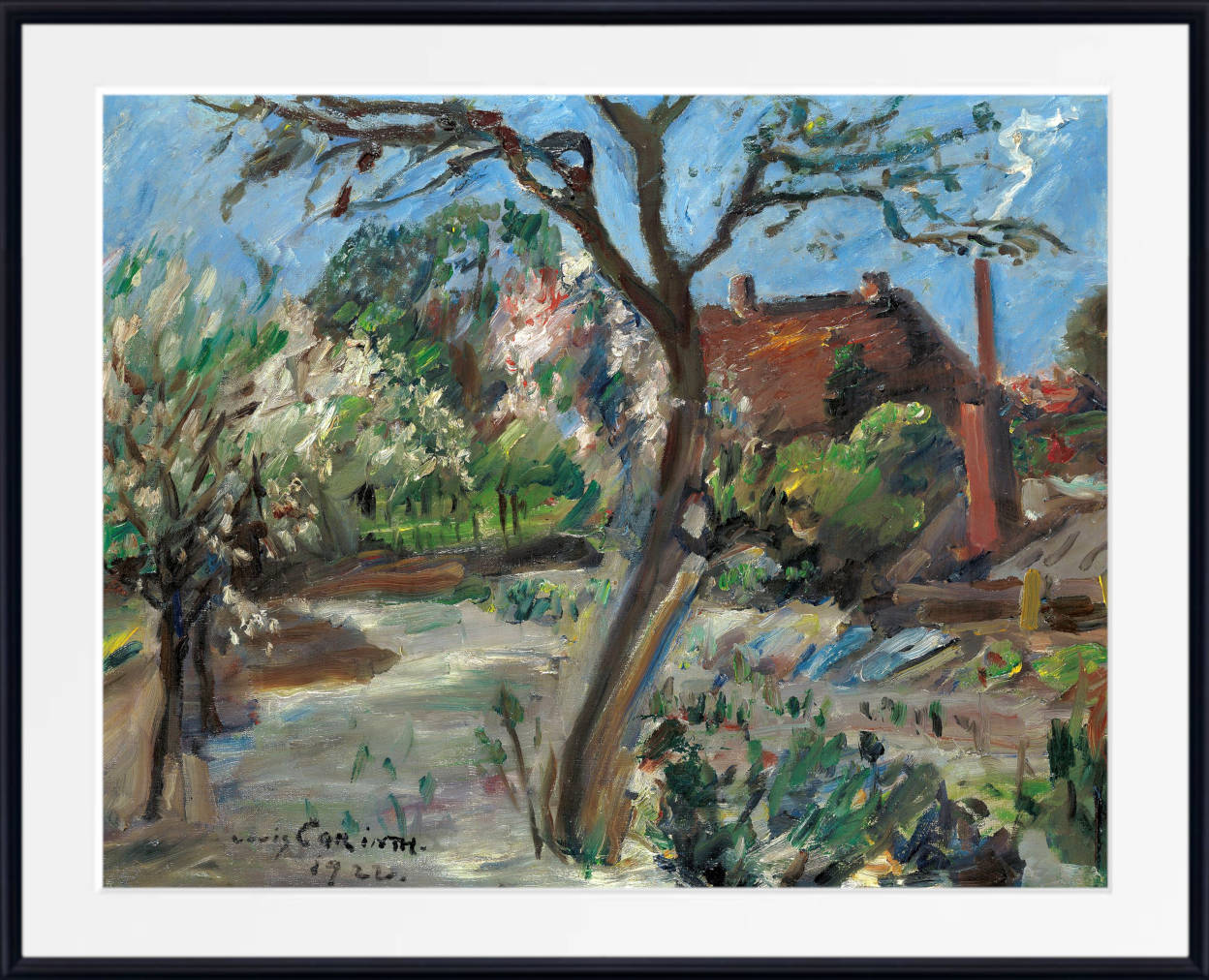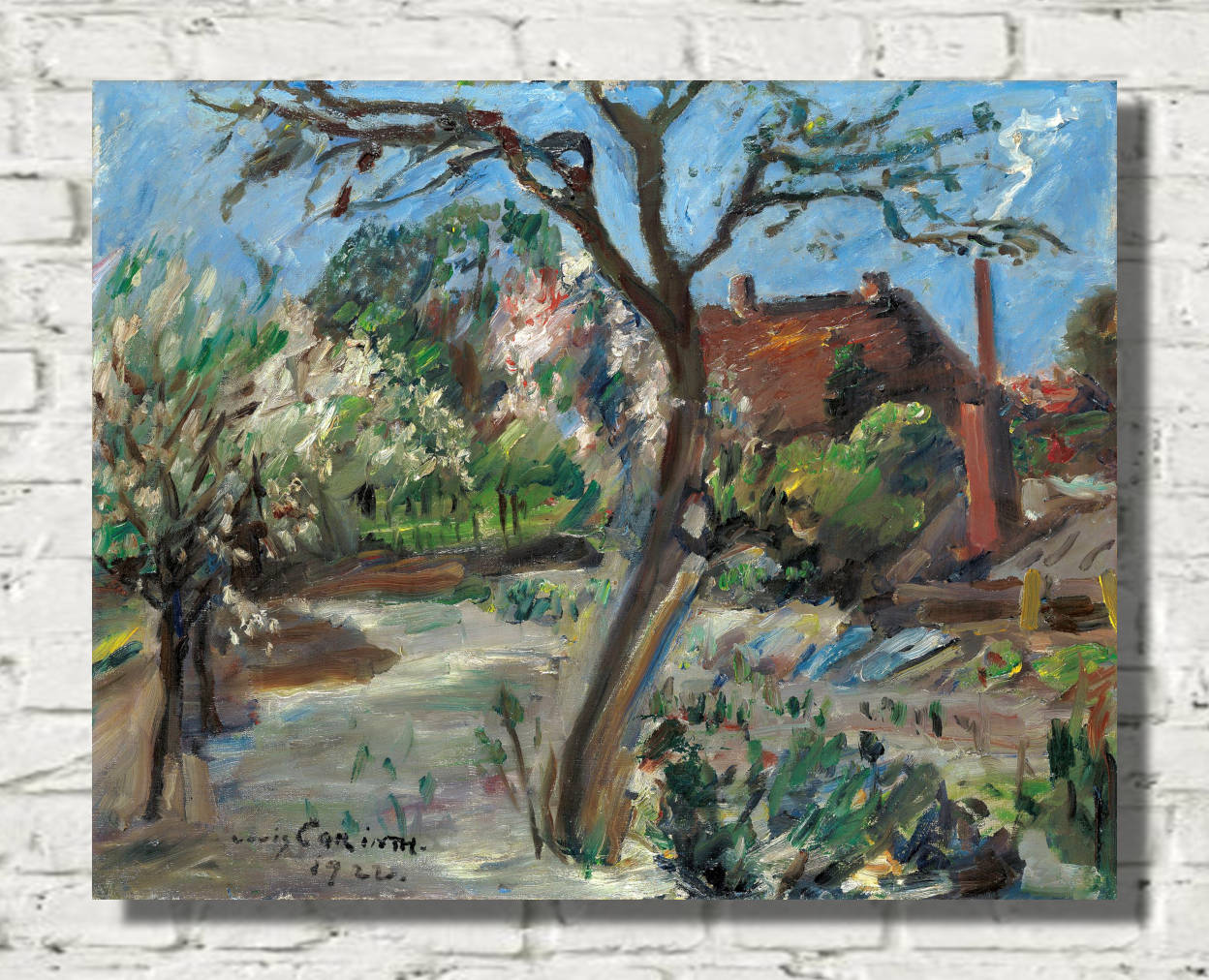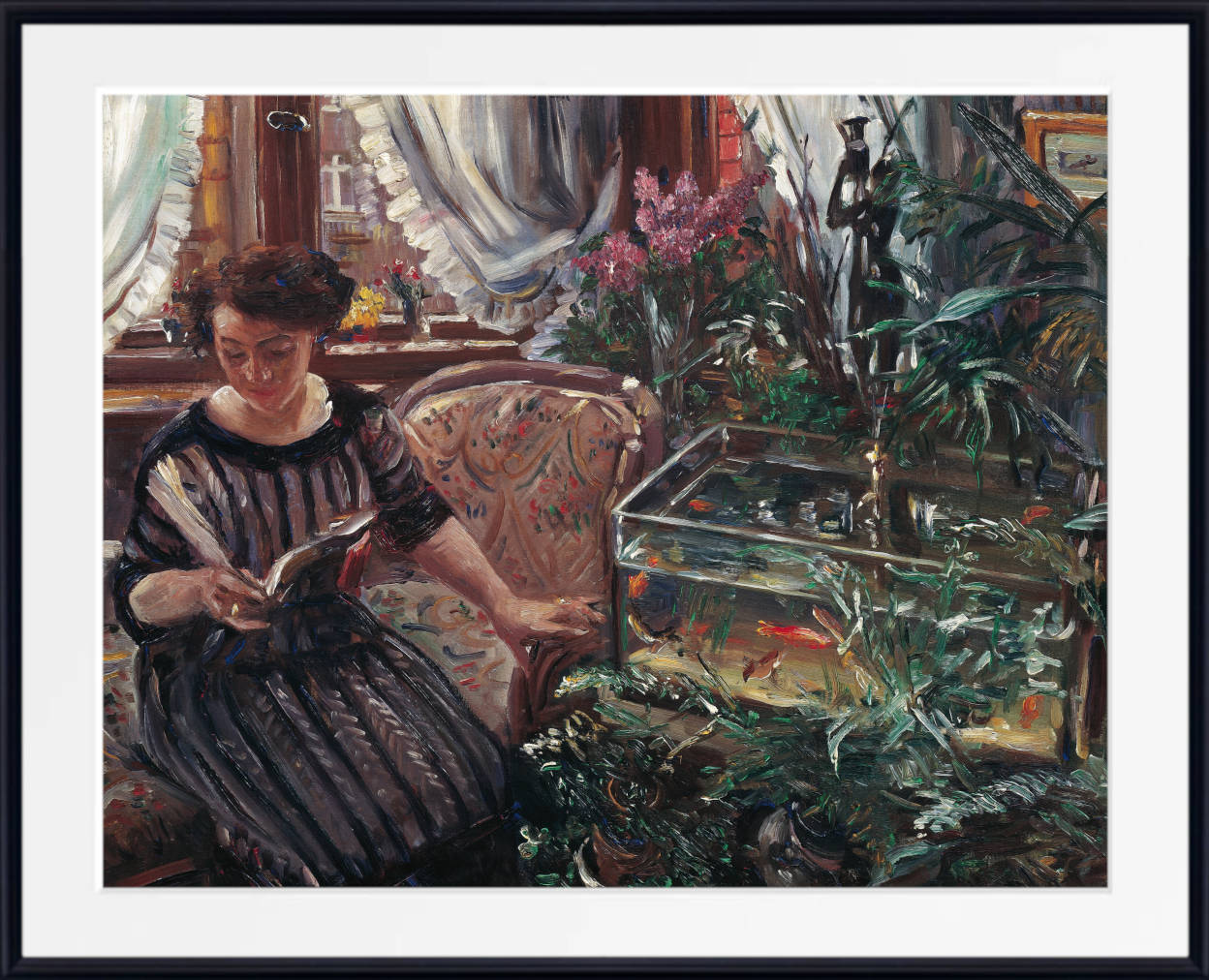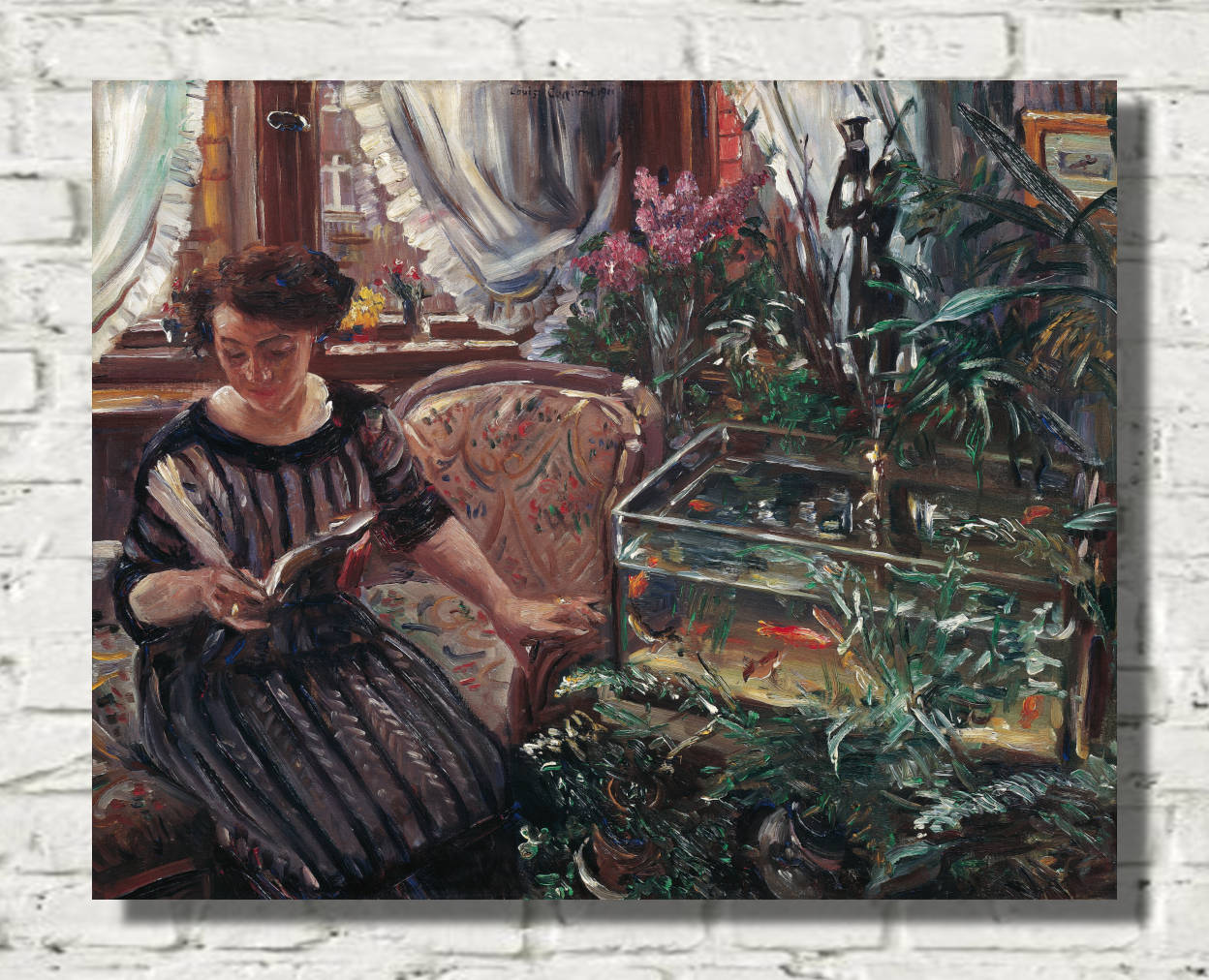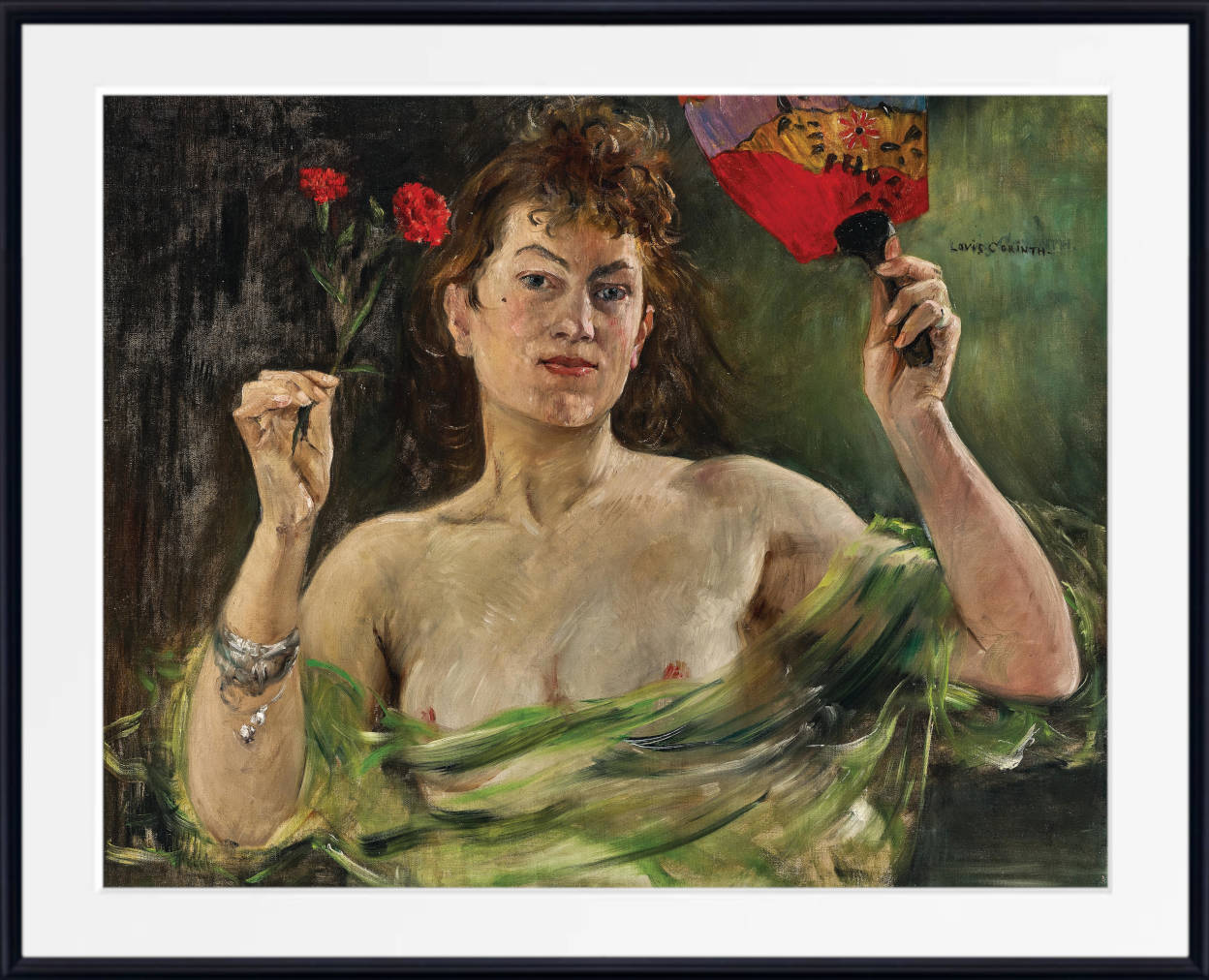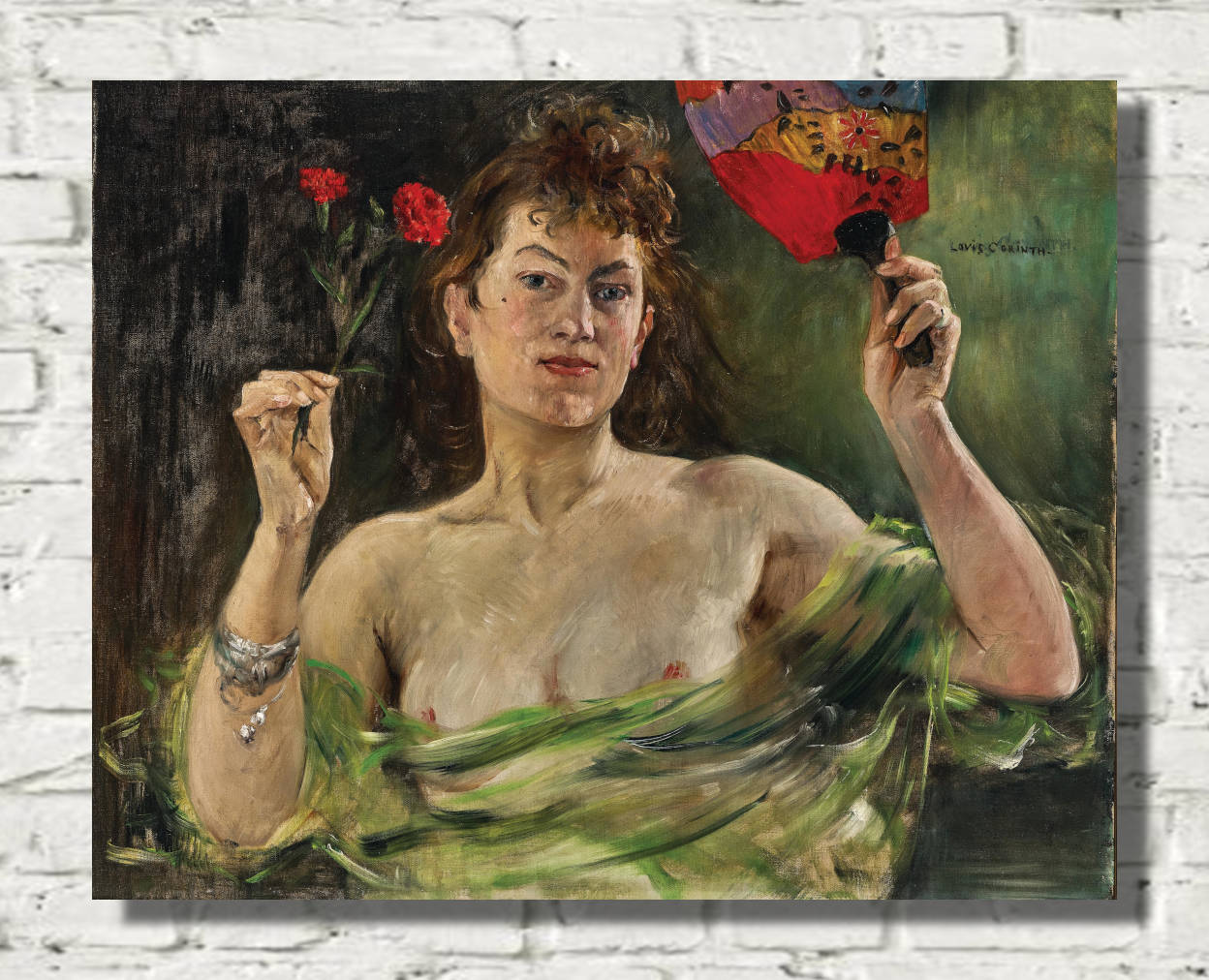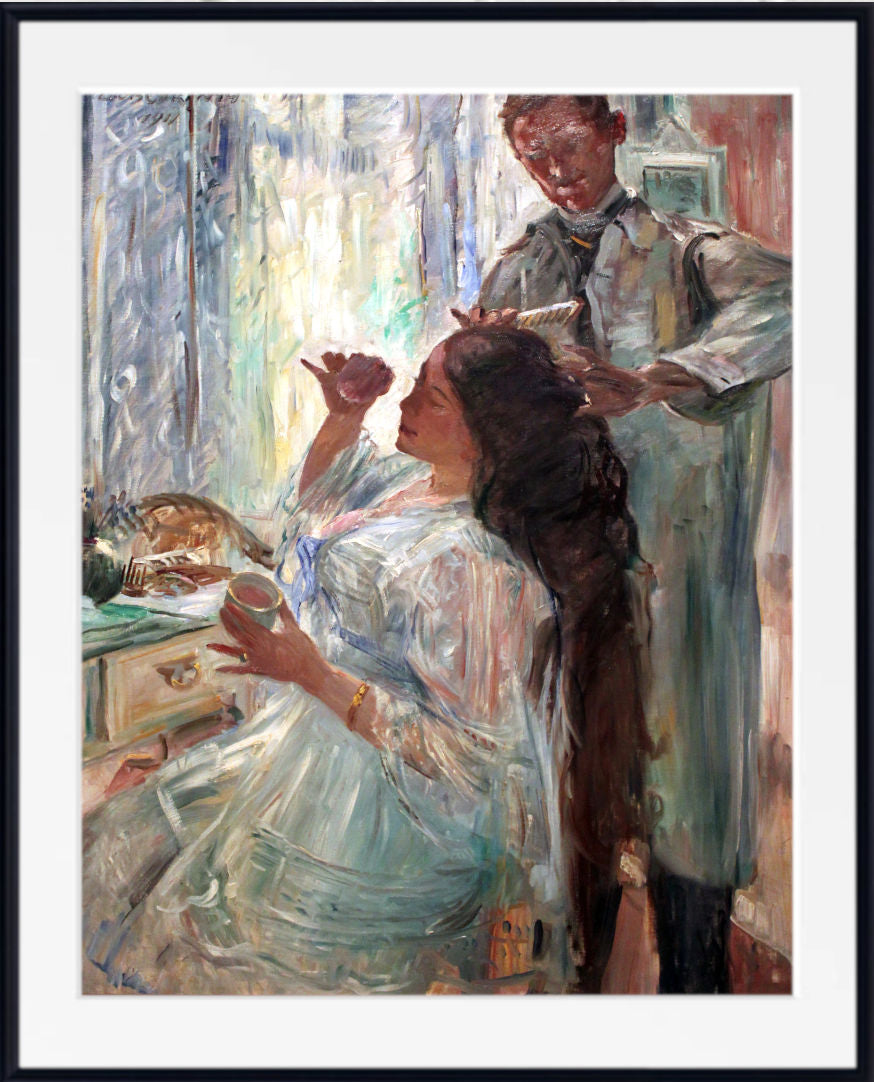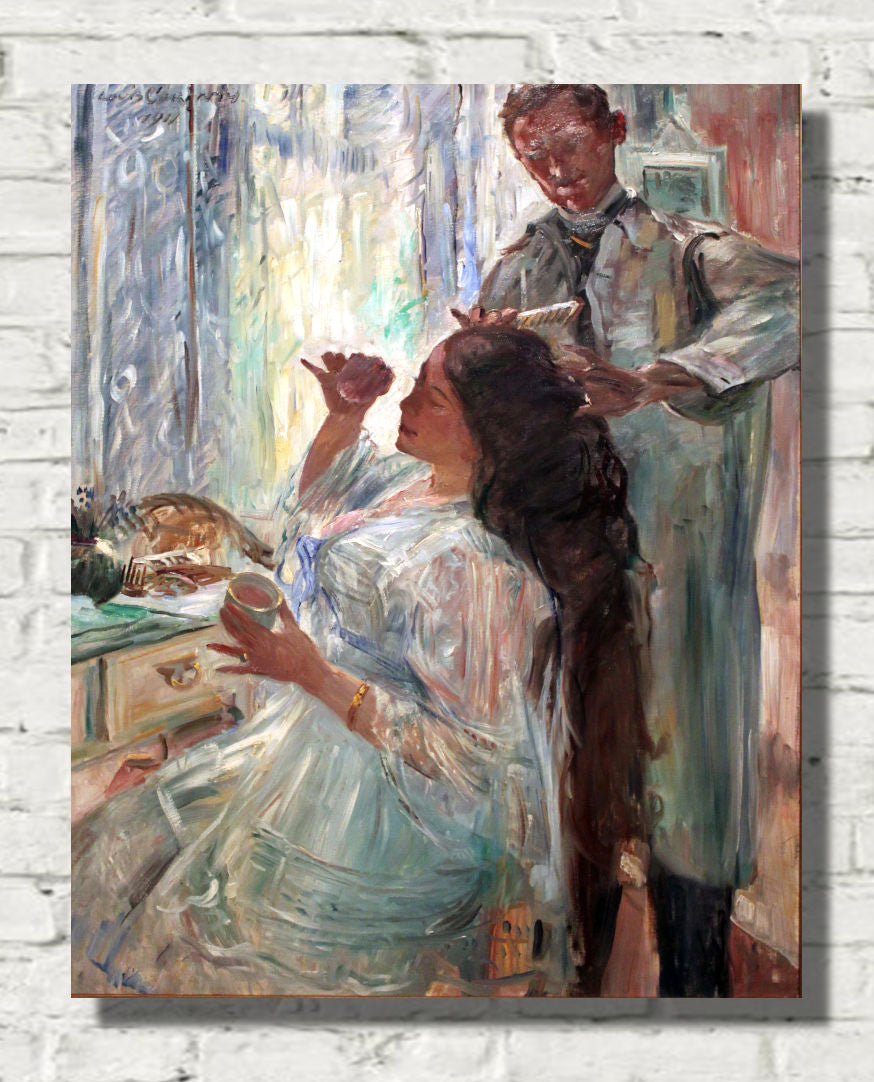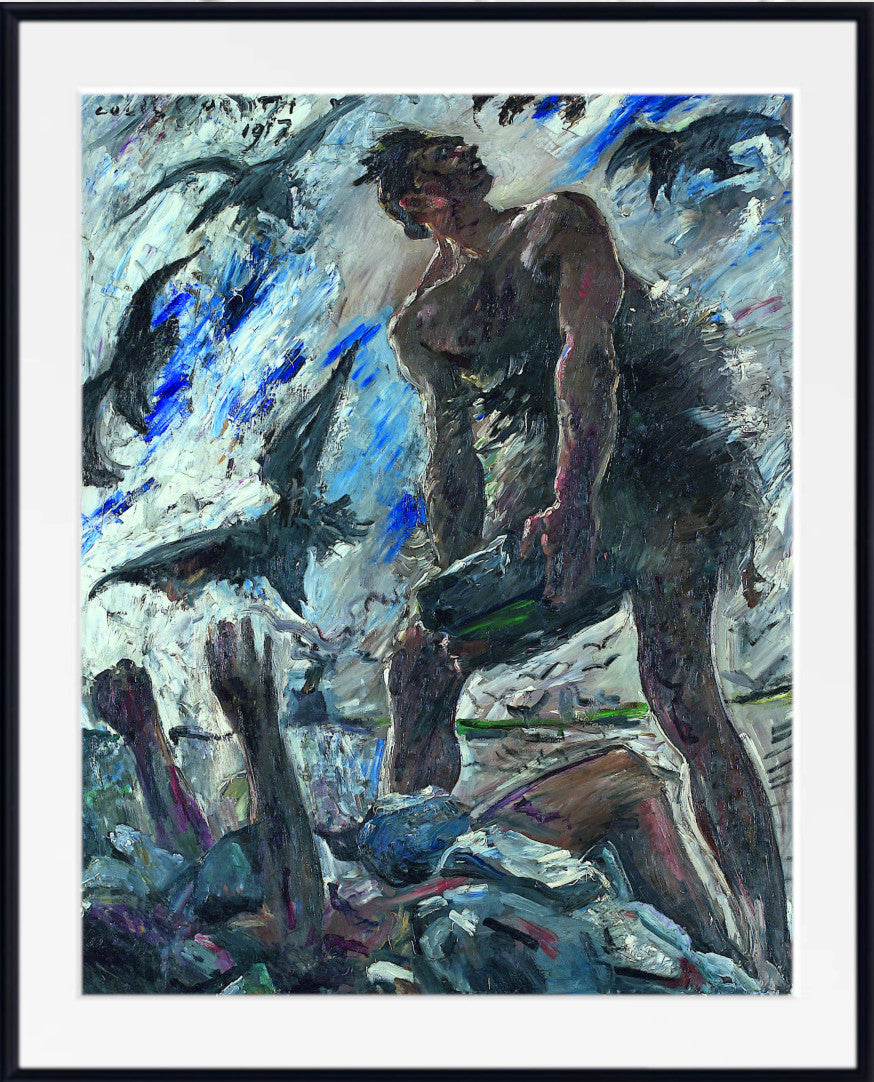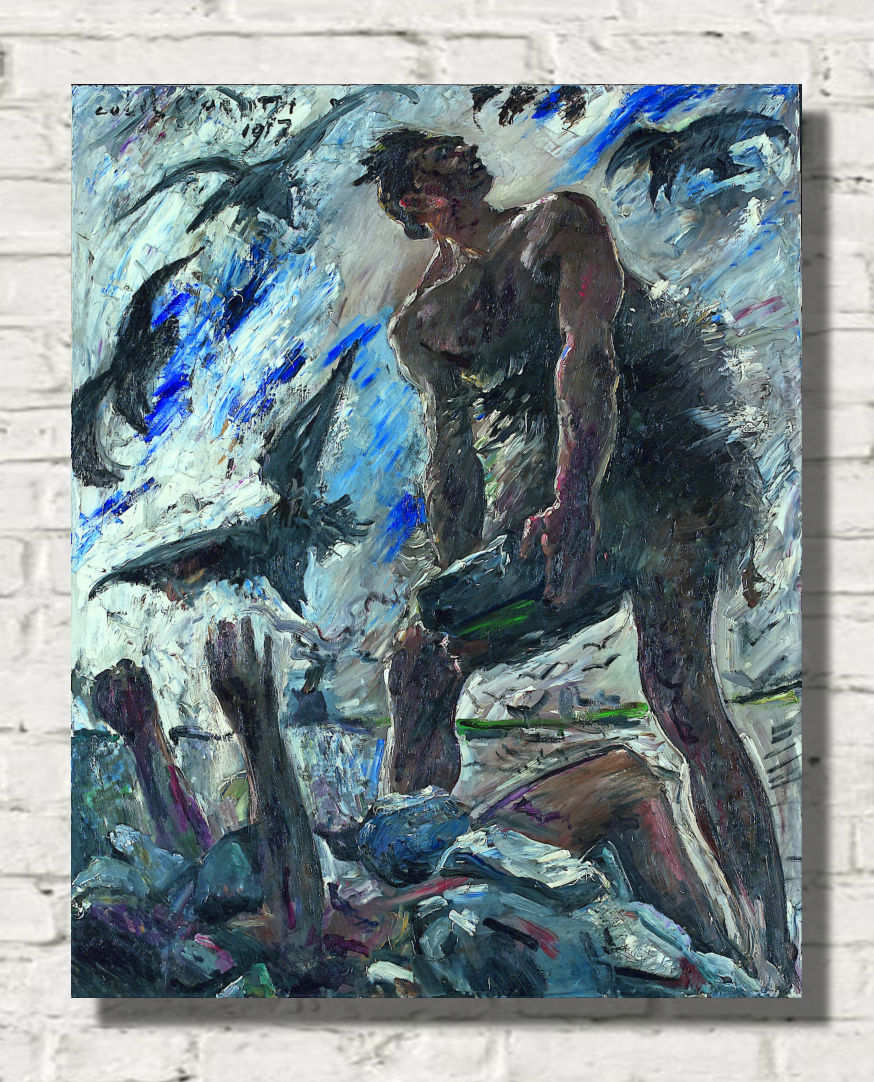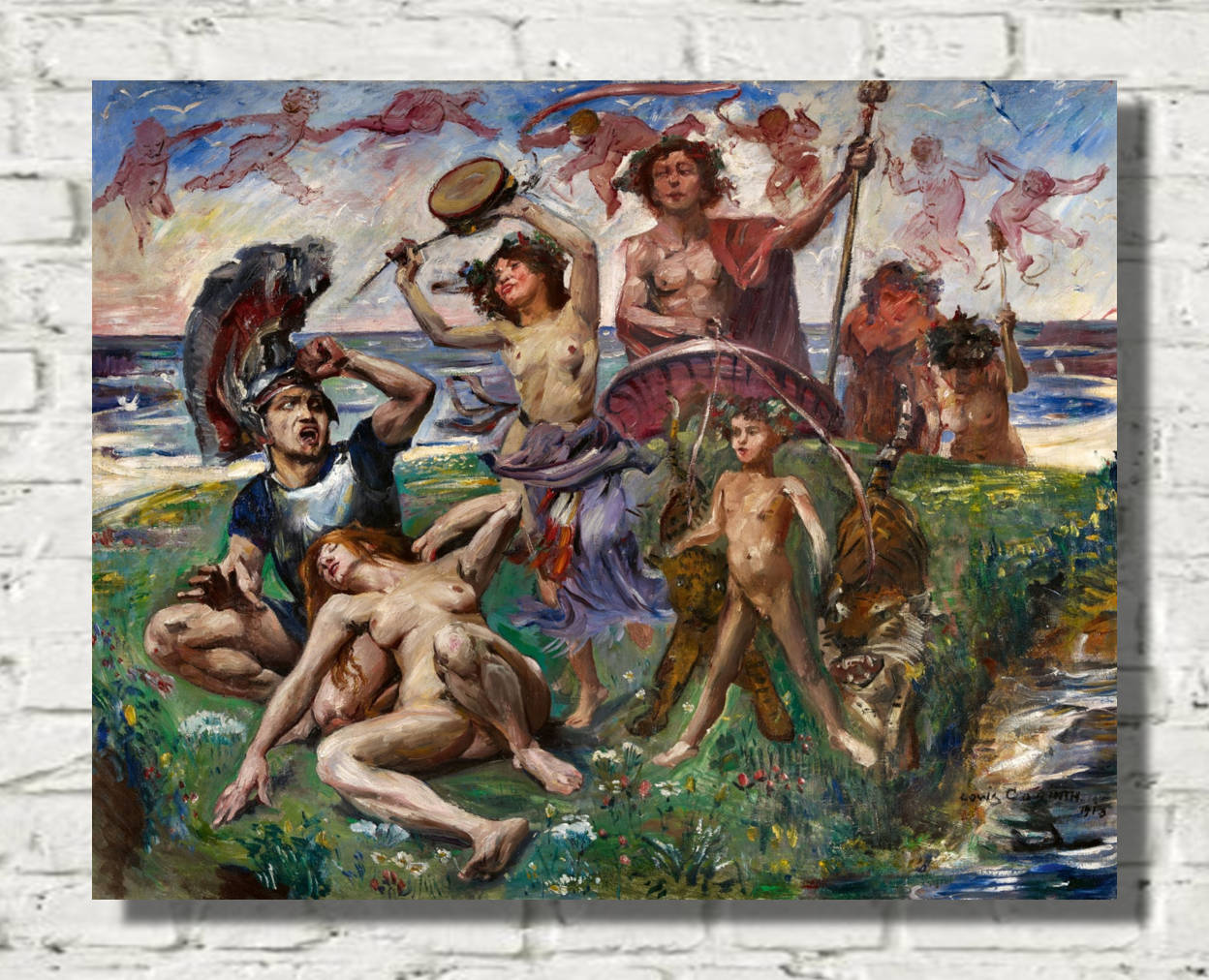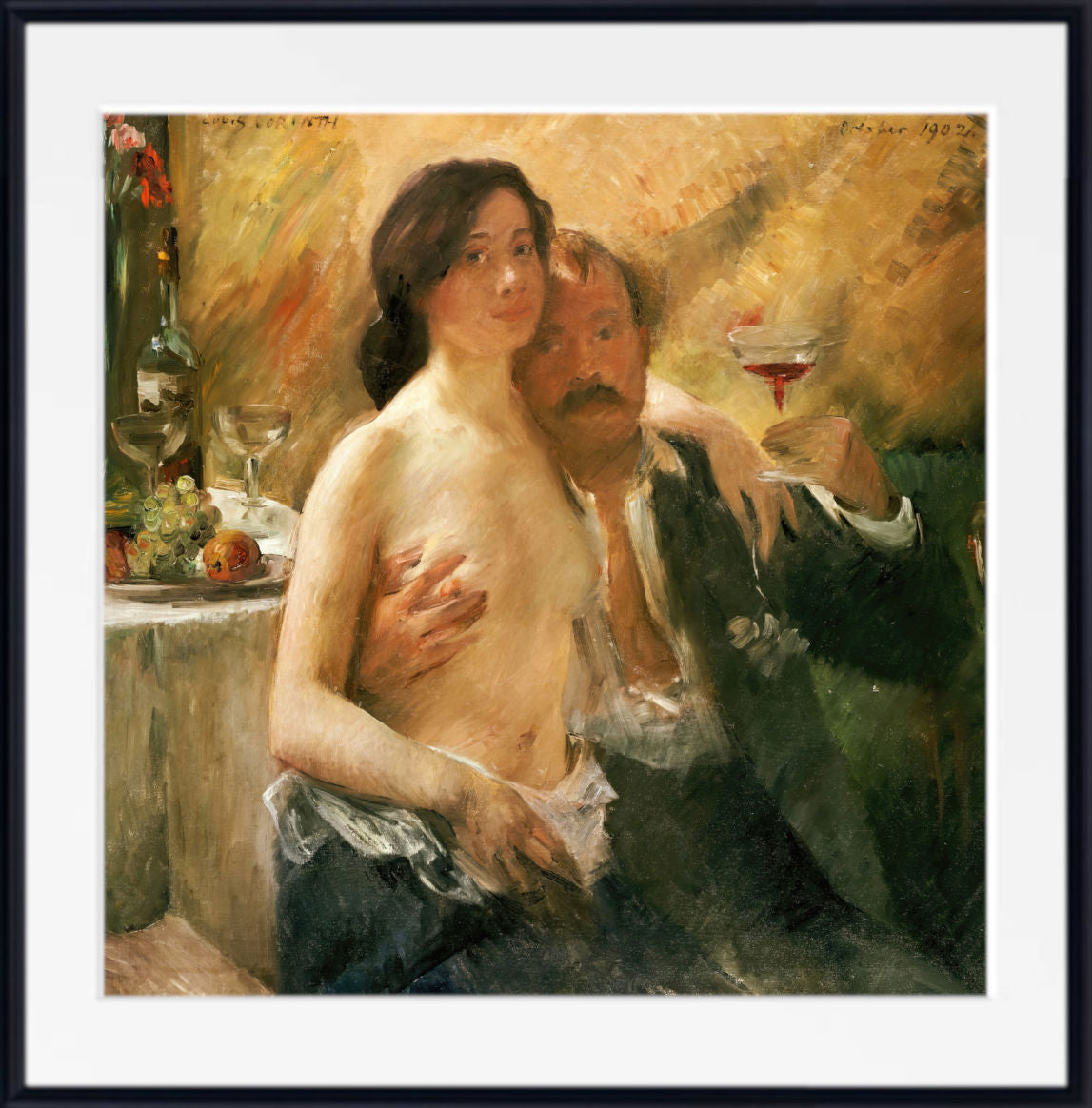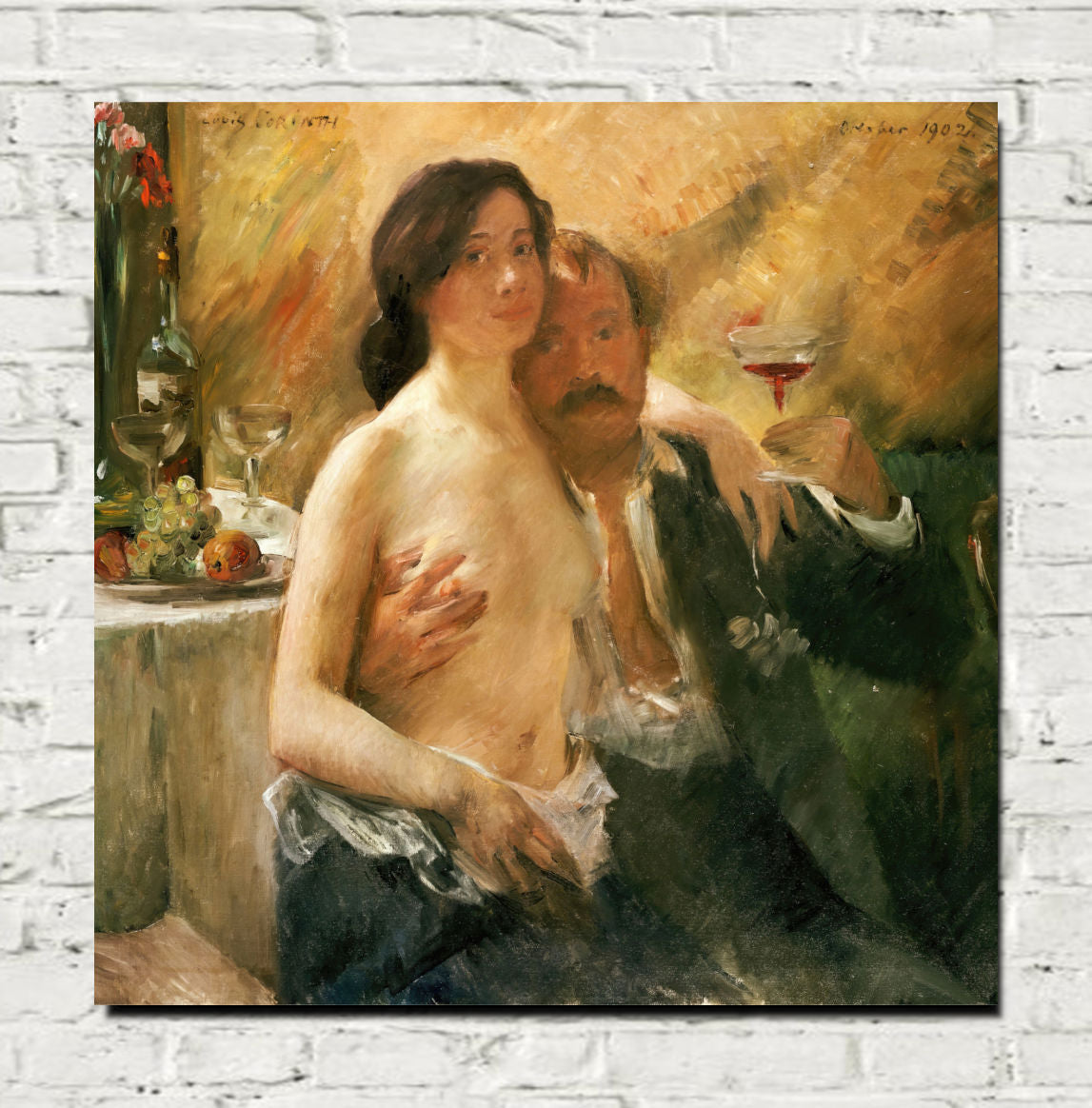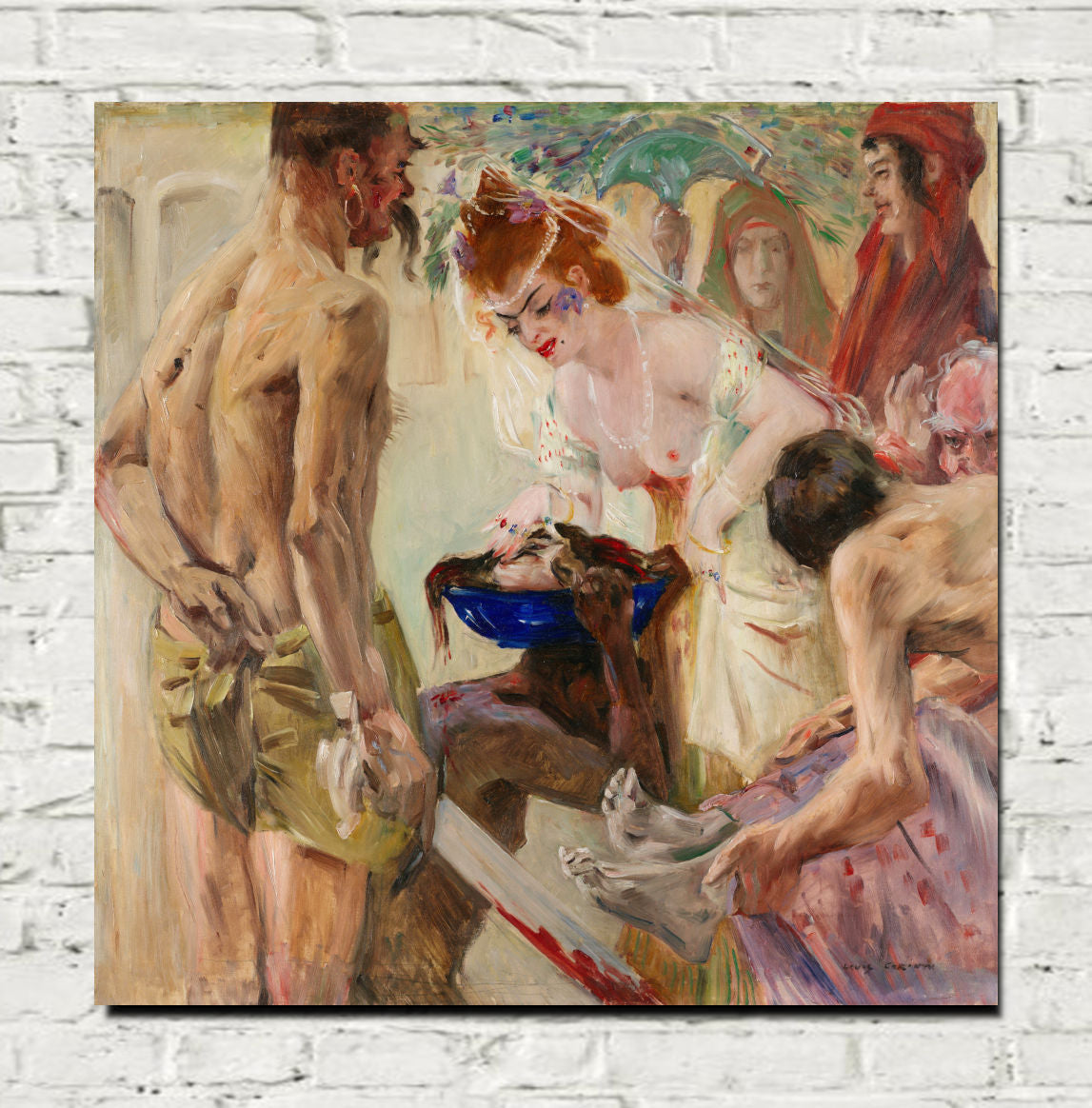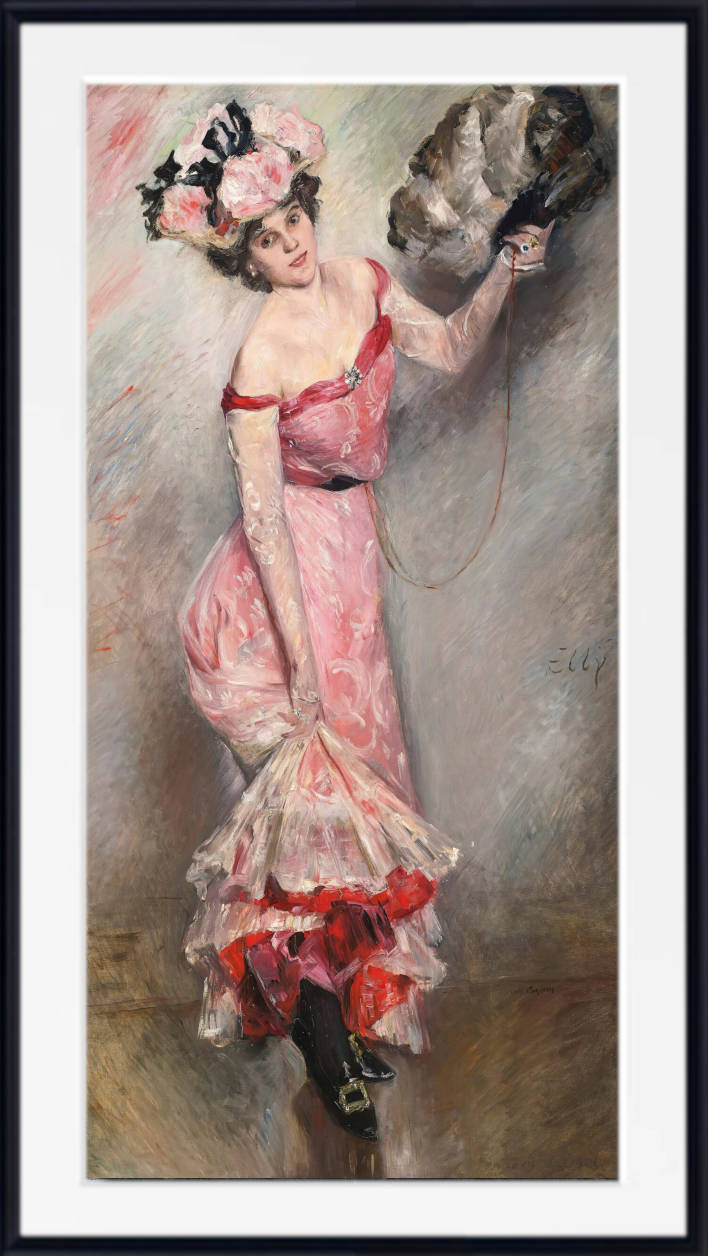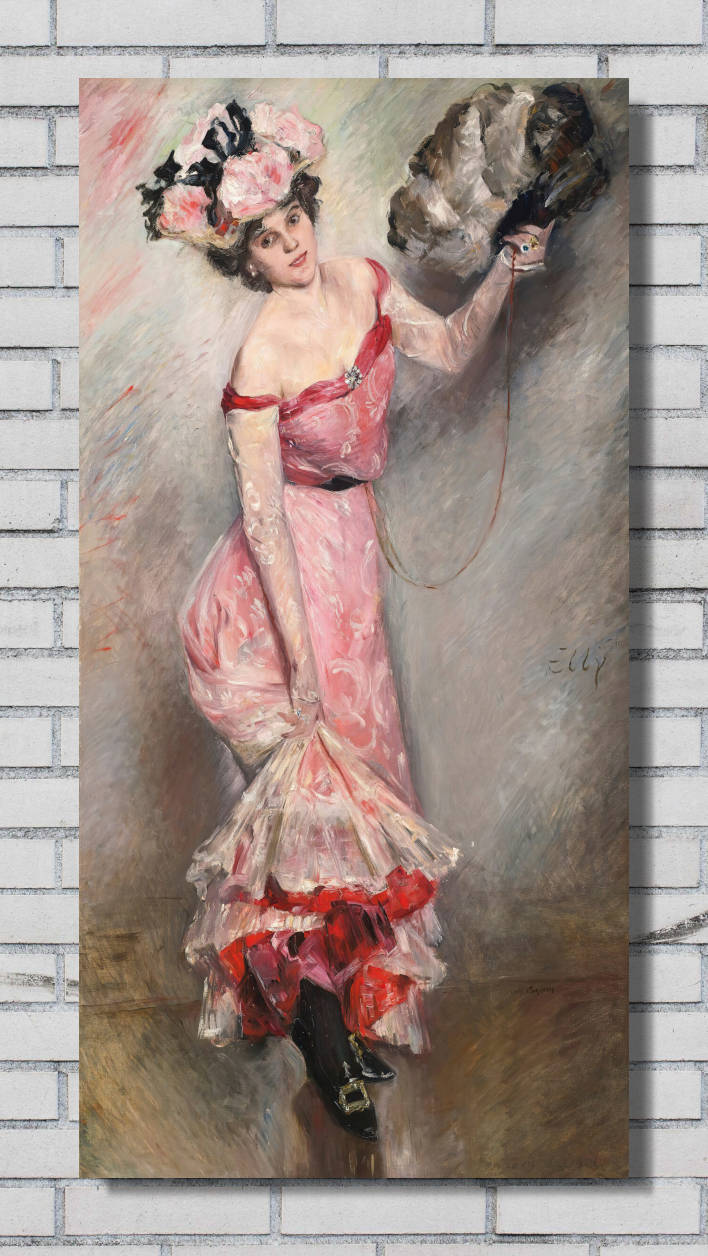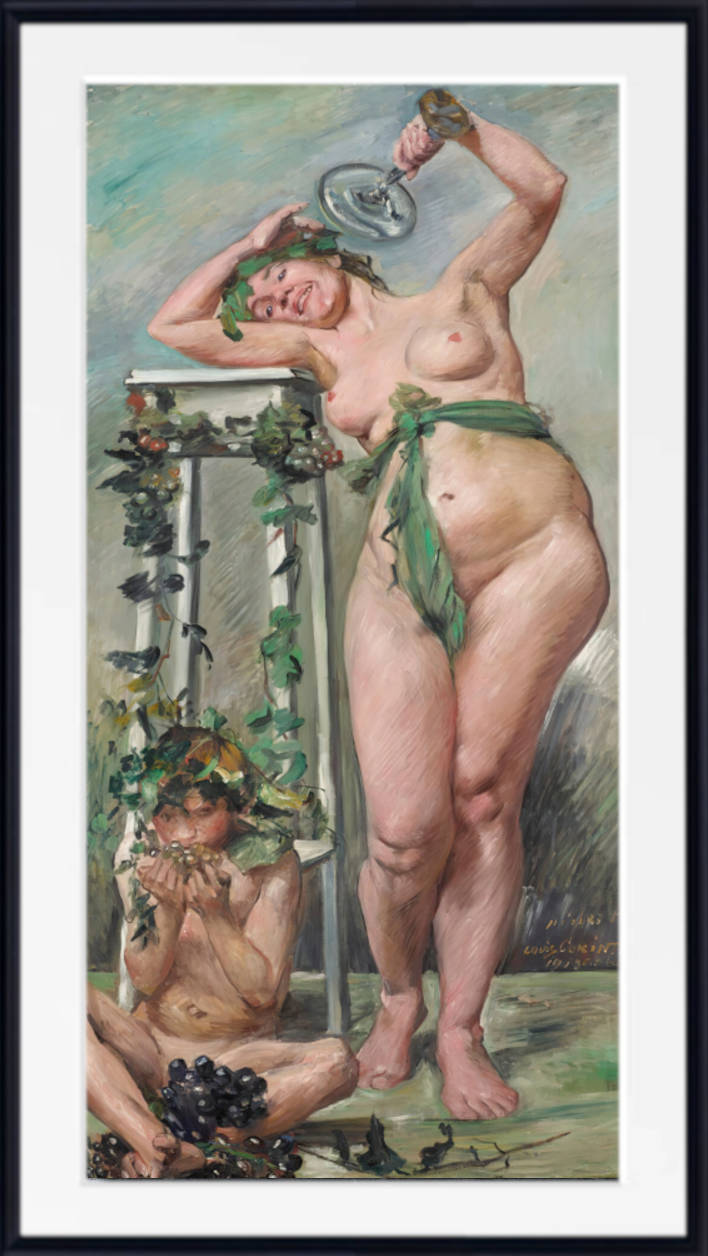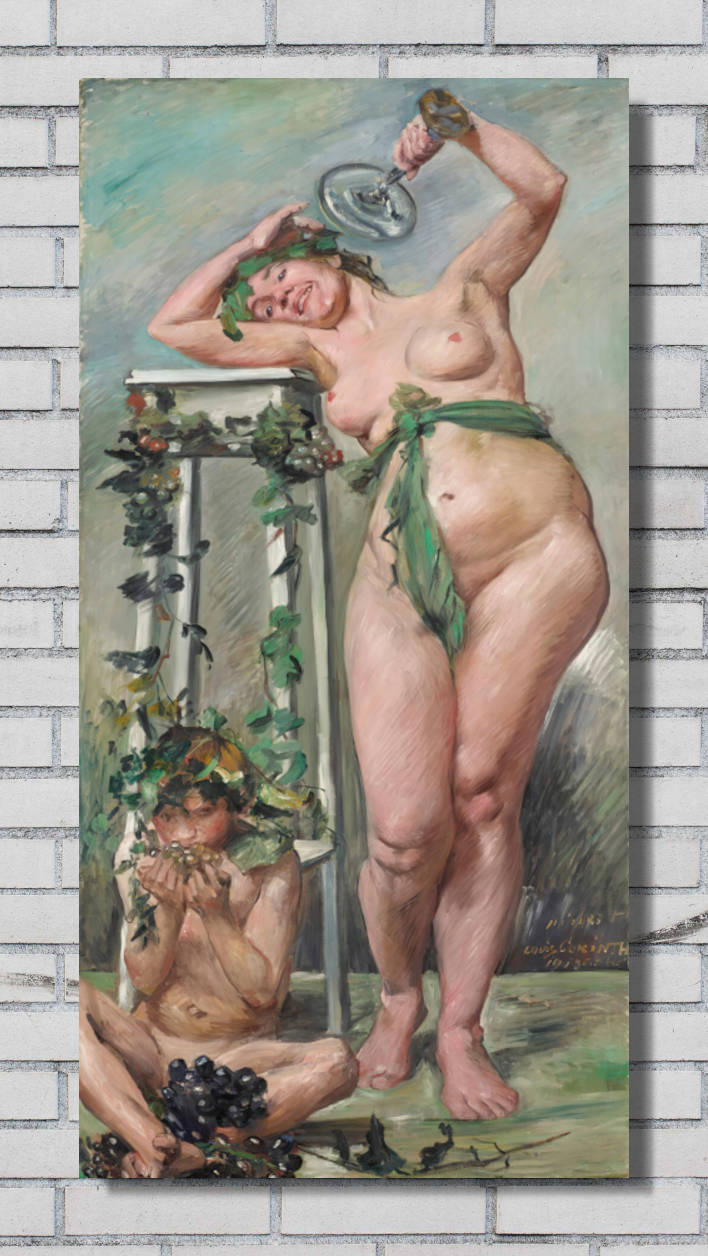Lovis Corinth (1858–1925) stands as one of the most influential figures within the Berlin Secession, known for his dynamic blend of Realism and Expressionism that powerfully captures psychological intensity and physical vitality. Corinth’s work spans portraiture, landscapes, and historical themes, characterized by vigorous brushwork, bold colors, and an innovative approach to subject matter. As a founding member of the Berlin Secession, he rebelled against academic art norms, championing modern artistic expressions and influencing a generation of artists in early 20th-century Germany. This article provides an in-depth look into Corinth’s style, major works, and impact, with a detailed analysis of four iconic paintings: Self-Portrait with a Rope Around the Neck (1905), Ecce Homo, Innocentia, and Three Graces.
Early Life and the Berlin Secession
Lovis Corinth was born on July 21, 1858, in Tapiau, East Prussia. He trained at the Academy of Fine Arts Munich under Franz von Defregger and Ludwig von Löfftz, absorbing an academic style that would later evolve under the influence of Impressionism and later Expressionism. Corinth’s early work was marked by a commitment to realism, focusing on detailed portraiture and genre scenes.
In 1899, Corinth moved to Berlin and joined the Berlin Secession, a group founded by artists who sought to promote modern art styles and break away from the conservative academic tradition. The Secession played a pivotal role in Corinth’s artistic development, allowing him to experiment with bolder colors, freer brushwork, and more intense emotional themes. His evolving style made Corinth a vital contributor to the Expressionist movement, and his work continued to influence German art until his death in 1925.
Style and Themes
Corinth’s art is distinguished by a vivid intensity that merges naturalistic detail with expressive, sometimes grotesque, interpretations of the human figure. His work often explores themes of mortality, vulnerability, and human suffering, reflecting his keen interest in both the physical and psychological dimensions of his subjects. Corinth’s stroke evolved from meticulously detailed forms to looser, expressive brushwork that conveyed his growing fascination with the visceral and ephemeral aspects of life.
Following a stroke in 1911 that partially paralyzed him, Corinth’s art became even more introspective and experimental, delving into darker themes with a newfound rawness and vigor. His later work is notable for its emotive power, exploring the fragility of human life and the inevitability of death.
Analysis of Major Works
1. Self-Portrait with a Rope Around the Neck (1905)
Self-Portrait with a Rope Around the Neck is one of Corinth’s most psychologically charged self-portraits. In this work, Corinth paints himself in a moment of anguish, with a rope loosely draped around his neck, symbolizing inner turmoil and existential dread. The portrait is striking for its confrontational composition and the intensity of the artist’s gaze. Corinth’s expression is one of defiance and vulnerability, and his use of dark, muted colors emphasizes the bleakness of the mood.
The brushstrokes are deliberately rough, particularly around the head and neck, emphasizing the physicality of his struggle. This self-portrait serves as both a statement of Corinth’s own internal battles and a commentary on the tension between life and death. The work stands as a testament to Corinth’s willingness to confront dark, often uncomfortable themes, blending autobiographical detail with universal existential concerns.
2. Ecce Homo
In Ecce Homo, Corinth presents a powerful interpretation of Christ during his suffering. This work diverges from traditional religious depictions, instead capturing a more visceral, human response to pain. Corinth’s Christ is not a serene, otherworldly figure but a profoundly human one, whose suffering is both physical and emotional. The painting employs stark contrasts between light and dark, with heavy shadows accentuating Christ’s anguish.
The face of Christ in Ecce Homo is rendered with expressive lines, and the use of thick, swirling brushstrokes gives the figure a haunting, almost spectral quality. Corinth’s interpretation is both reverent and intensely human, inviting the viewer to empathize with the emotional and physical weight of Christ’s suffering. This painting aligns with the Expressionist tendency to explore themes of suffering and redemption, focusing on raw, emotive power rather than traditional religious iconography.
3. Innocentia
In Innocentia, Corinth explores themes of purity and vulnerability through the depiction of a young girl. Unlike his darker, more intense works, this painting has a softer, more delicate tone, though it retains Corinth’s characteristic attention to emotional depth. The girl’s expression is one of innocence and introspection, and the subdued color palette emphasizes her gentle demeanor.
Corinth’s brushwork is lighter in Innocentia, reflecting the theme of purity that permeates the painting. The background is simple and unadorned, directing the viewer’s focus onto the girl’s face. Innocentia embodies Corinth’s ability to capture a range of human emotions and psychological states, from innocence to introspection, with sensitivity and nuance.
4. Three Graces
Three Graces is a celebration of the human form, depicting three women in various stages of undress. This painting showcases Corinth’s fascination with the physicality of the human body, portraying it with a robustness and vitality that is typical of his style. The figures are painted with broad, energetic brushstrokes, imbuing them with a sense of movement and dynamism.
The composition is rich in symbolic meaning, drawing on the mythological theme of the Three Graces who represent beauty, charm, and creativity. Corinth’s approach is earthy and sensual, emphasizing the corporeal aspects of the human form over idealized beauty. In contrast to his earlier works, Three Graces reveals a more joyful and life-affirming aspect of Corinth’s oeuvre, highlighting his ability to celebrate human beauty and vitality.
Legacy and Influence
Lovis Corinth’s work left a lasting impact on German Expressionism and the Berlin Secession, influencing subsequent generations of artists who sought to convey psychological and emotional depth through their art. His shift from Realism to Expressionism marked a significant moment in modern art history, as he bridged two contrasting styles to create a unique, hybrid approach. Corinth’s work is now celebrated for its intense emotional expressiveness, technical mastery, and innovative use of color and form.
Today, his paintings can be found in major museums across Germany and Europe, including the Alte Nationalgalerie in Berlin and the Lenbachhaus in Munich. Corinth’s legacy endures through his powerful portrayals of the human condition, capturing the complexities of life, suffering, and beauty with a raw intensity that resonates with modern viewers.
Related Articles
Unveiling Expressionism
References
- Barron, Stephanie, German Expressionism 1915-1925: The Second Generation. Los Angeles County Museum of Art, 1997.
- Schmidt, Paul Ferdinand. Lovis Corinth. H. Keller, 1922.
- Rewald, Sabine, Lovis Corinth, The Metropolitan Museum of Art, 1996.
- Heller, Reinhold, German Expressionist Prints and Drawings, Museum of Modern Art, New York, 1989.
- Spalding, Elizabeth, Expressionism: A Revolution in German Art. Phaidon Press, 1999.

